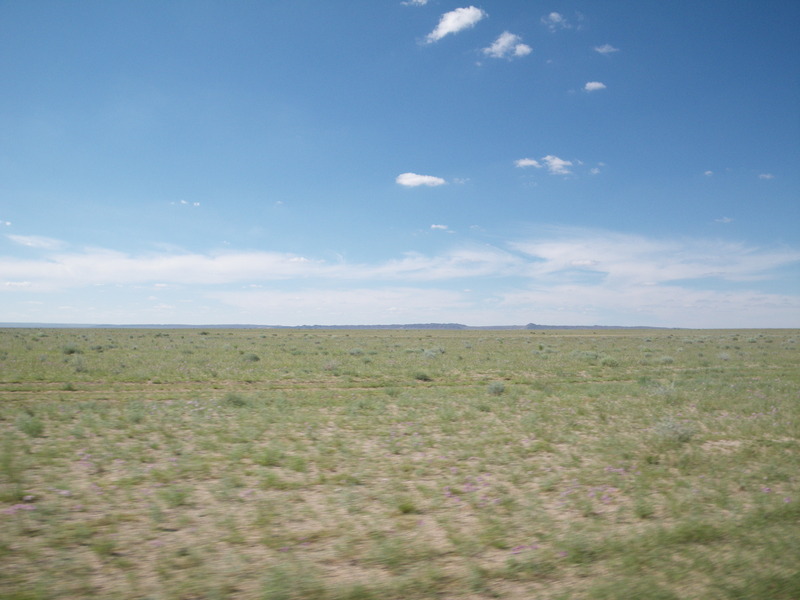
Sainshand is the capital of the Dornogobi (Easter Gobi) province of Mongolia. It is a stop on the train line from Beijing to Ulaan Baatar, the capital of Mongolia.
After staying awake much of the night with the changing of the bogies and border procedures, I got to Sainshand around 5:30 in the morning. The sunrise was beautiful.

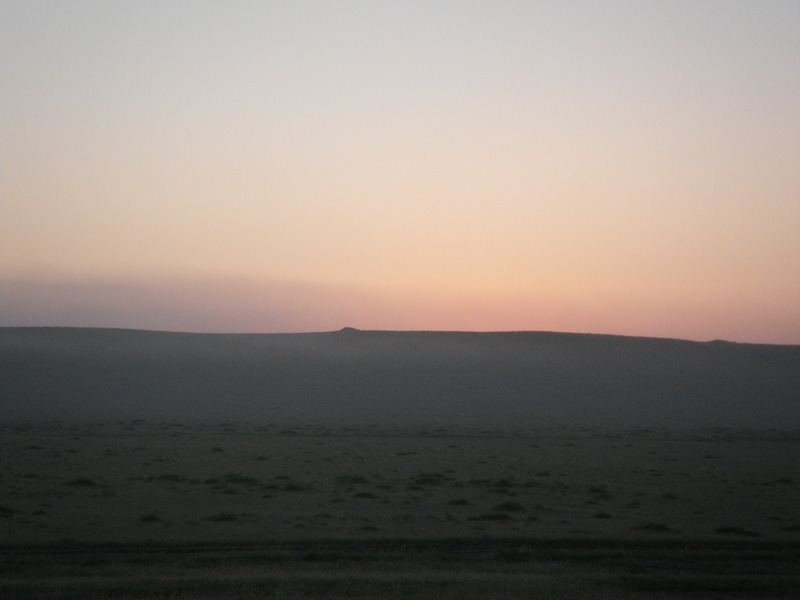
To visit the Gobi desert, I have joined a small tour. We are staying in traditional Mongolian dwellings, known as Ger. When I was growing up, I was told they were called Yurt, but Ger is the correct word.
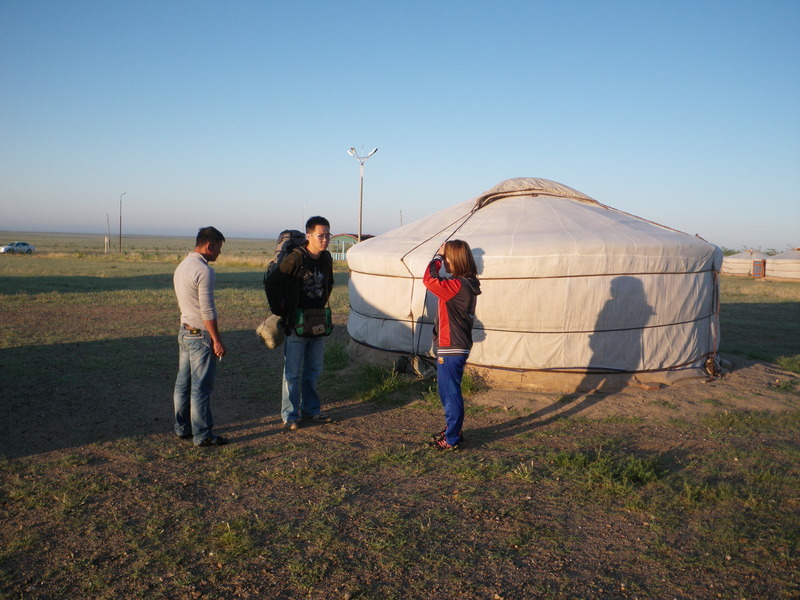
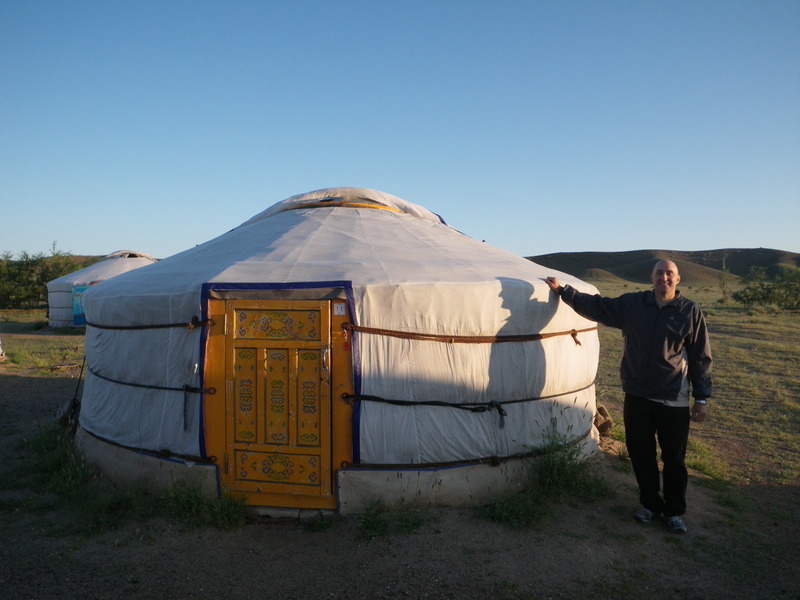
A Ger is built from cloth and wood, and is designed to be dismantled every so often (maybe every 4 months or so) and moved to a new location, wherever pasture may be better. The furniture inside our "Ger camp" was more elaborate than I've seen in the sheperds' Ger, and our Ger had electricity, but the rest, including the upright poles for holding up the top of the roof, was authentic.
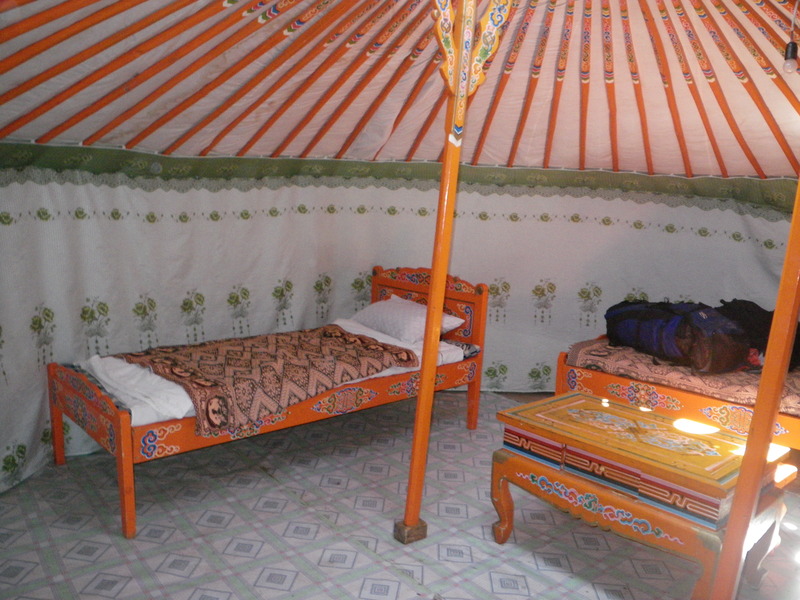

The top of the Ger has an opening, traditionally for letting out the smoke, but also for light and ventilation.
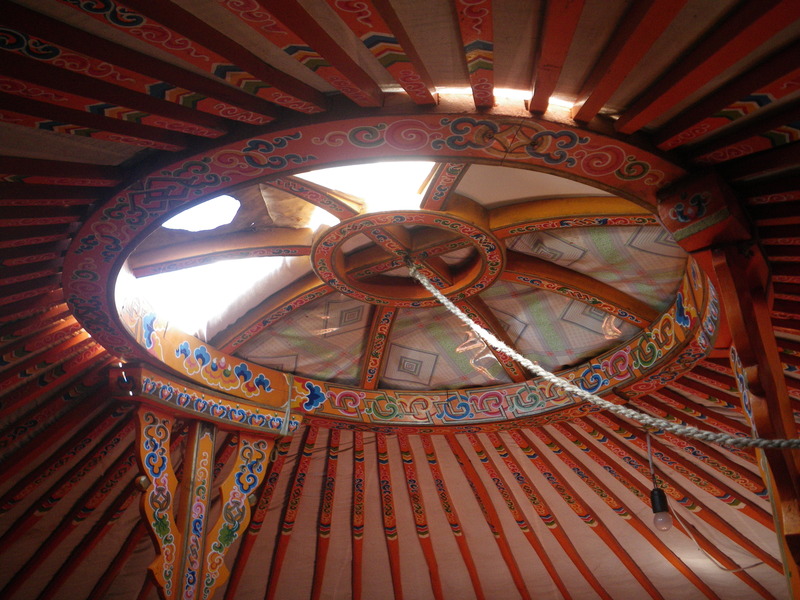
One Ger I saw that belonged to sheperds had an iron stovepipe sticking through the top.

In the 1820s, a precocious holy man established a monastery called Khamar. His name was Danzanravjaa (which I would write Danzenravjaa), and he was 17 years old at the time he established the monastery. He had quite a career after that, as a reformer of the Mongolian society.
In the 1930s, Mongolian communists, in their zeal to eliminate religion, largely destroyed the monastery and nearby holy sites.
Khamar monastery and surrounding holy sites are now being rebuilt. It was sometimes hard for me to distinguish what was new from what was old and well maintained. Old or new, the entire area was quite interesting. This is Khamar monastery.
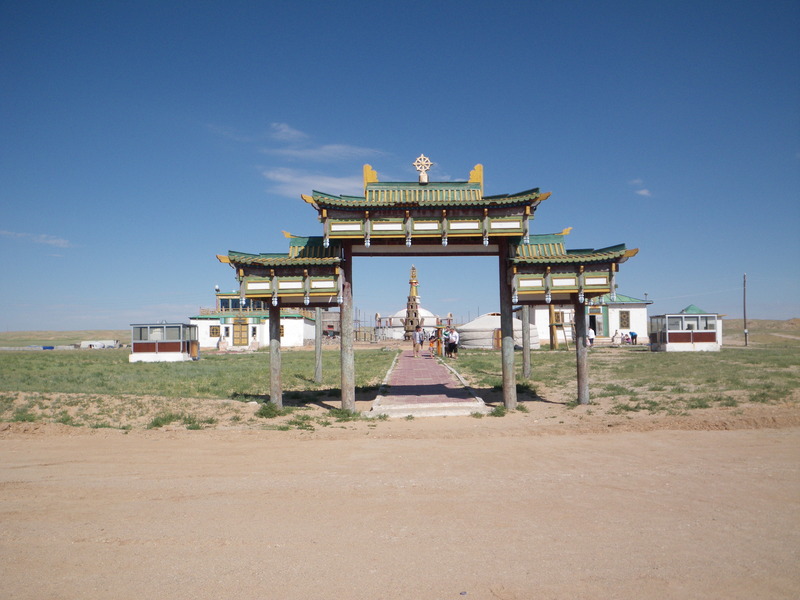
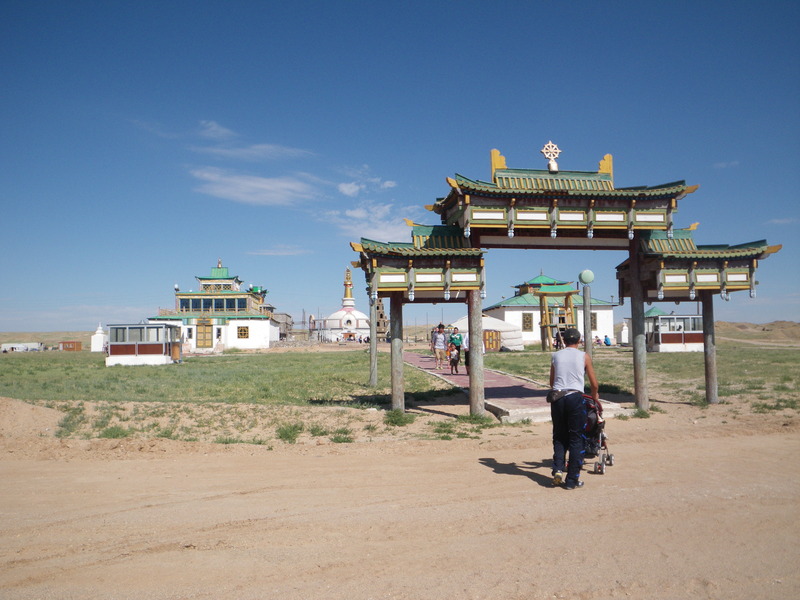
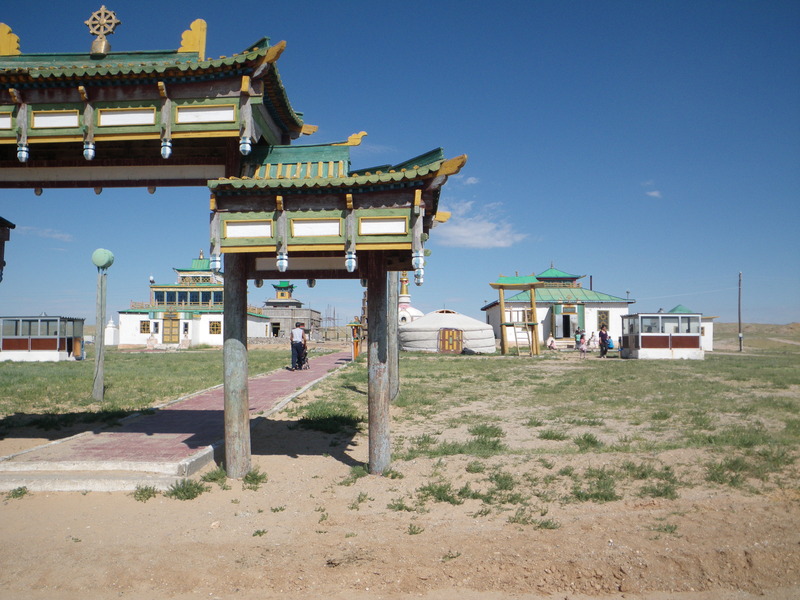
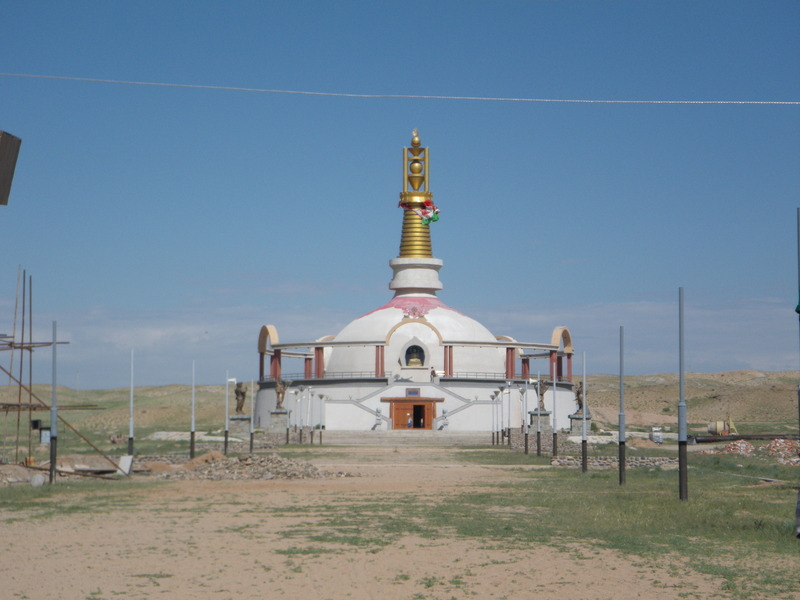
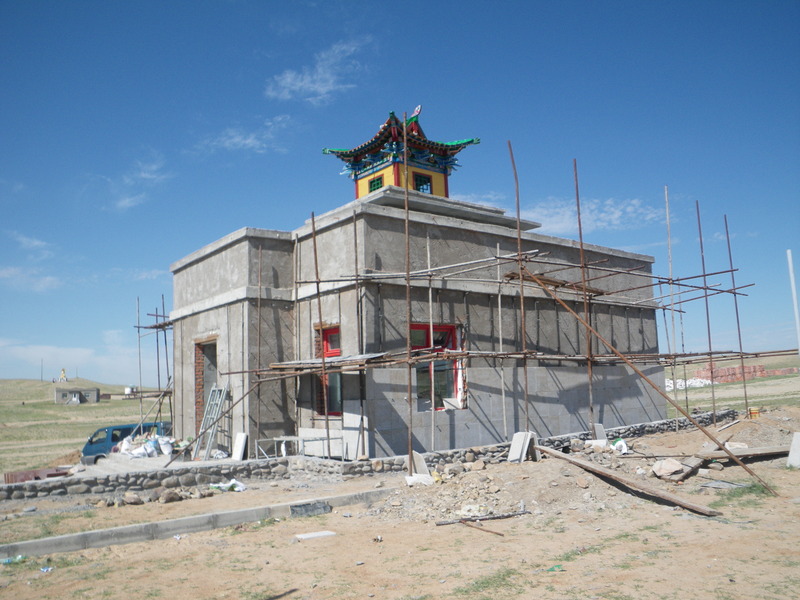
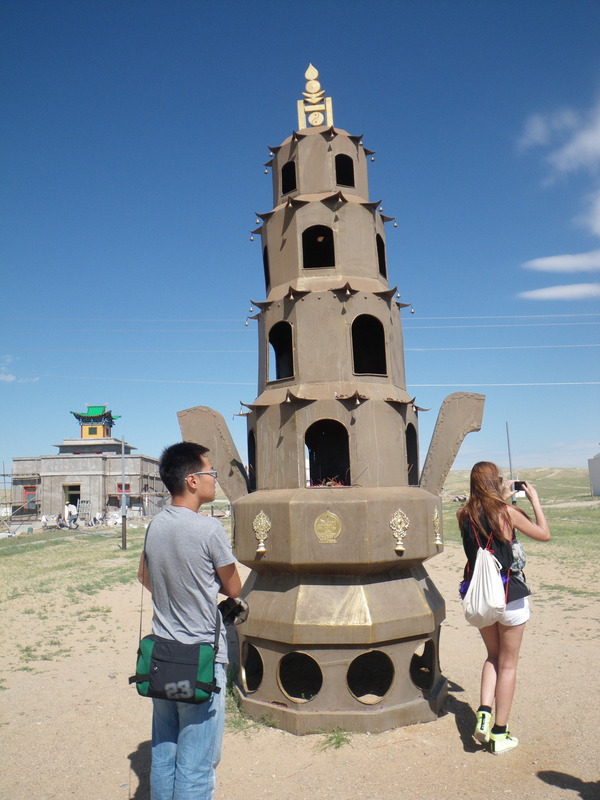
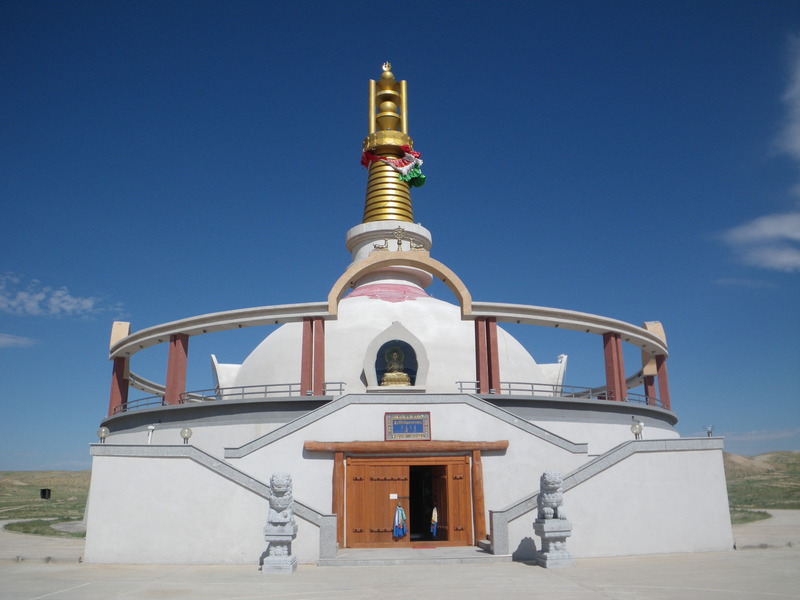
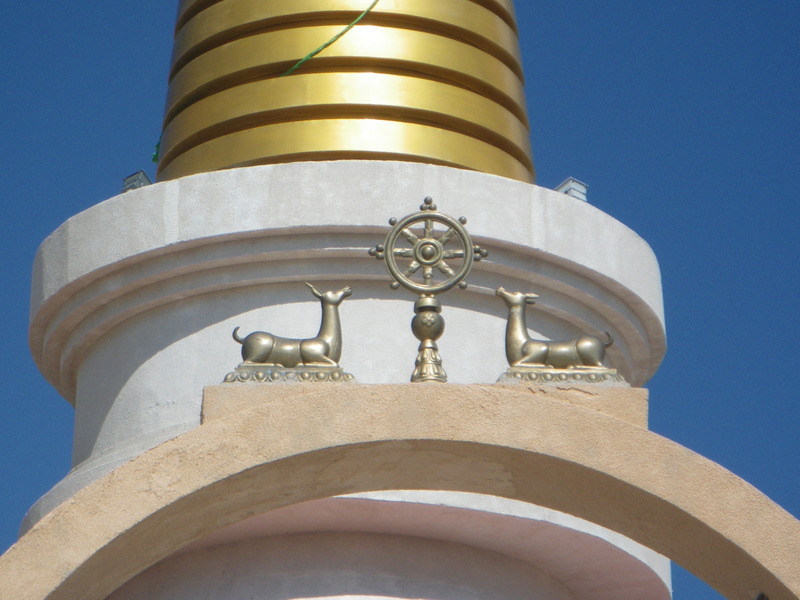
The antelope and the gazelle are by the side of the spoked wheel representing the Buddha, because by tradition they were the first animals to recognize the Buddha's holiness.
This last hall looked very new, both outside and inside.
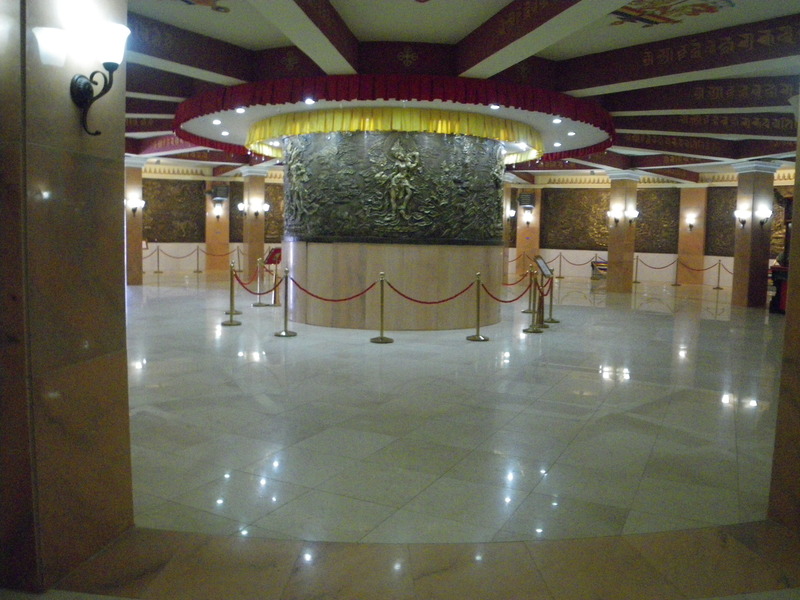
It had interesting haut-relief sculptures, including this one, of the Buddhist paradise where 4 different animals get along well together.
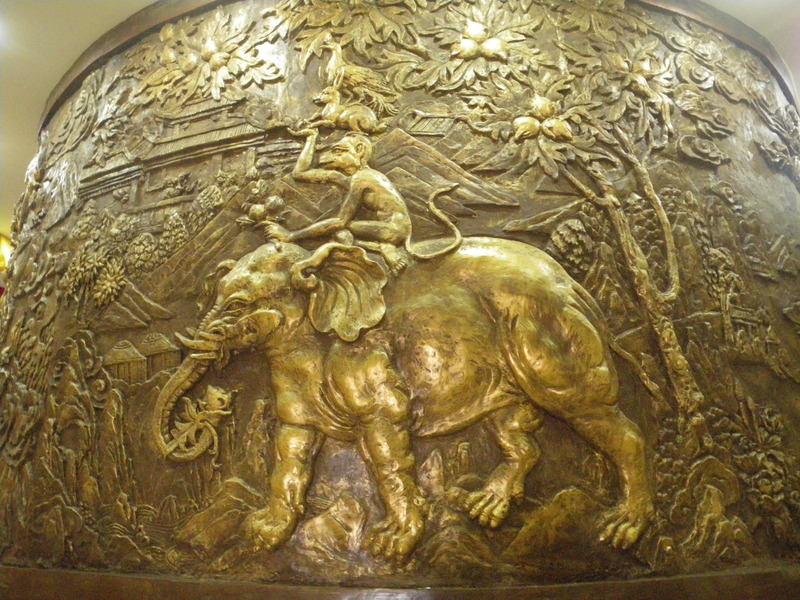
Outside this hall was a good place to get an overview of Khamar monastery.
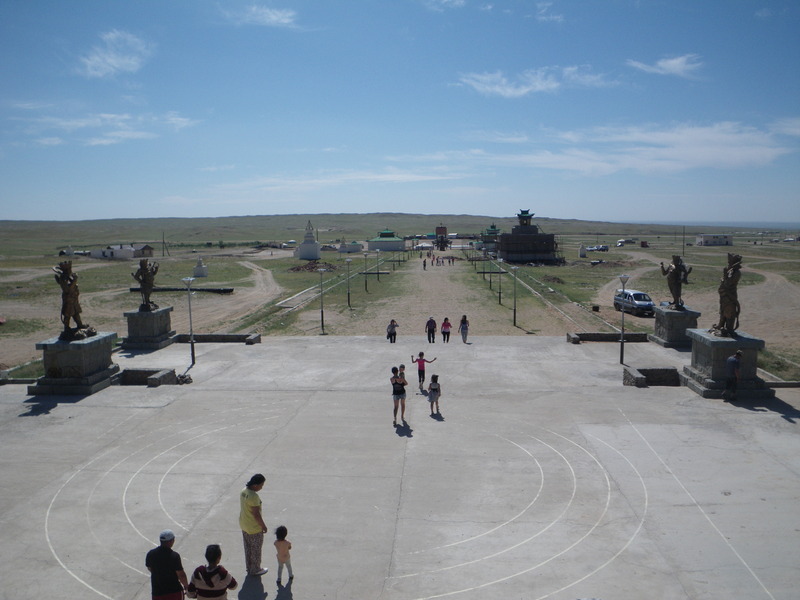
There were other interesting buildings, including this one, decorated with skulls.
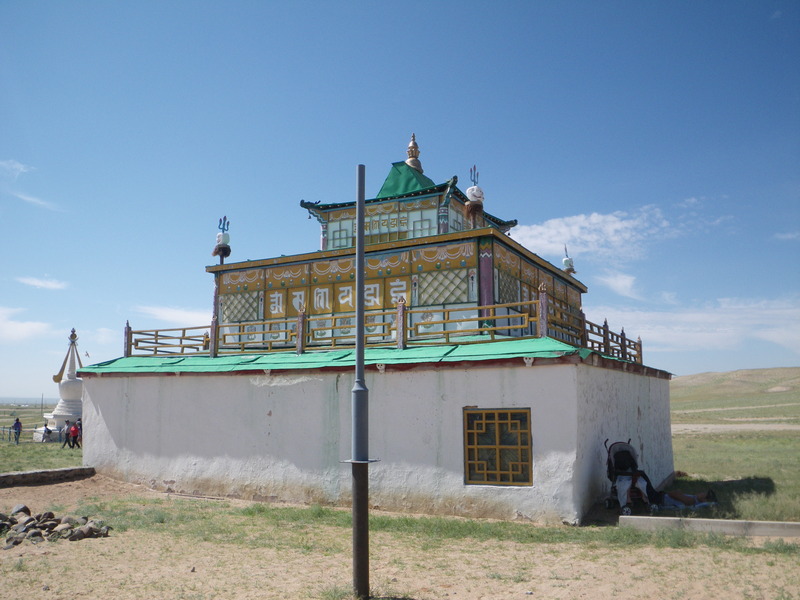
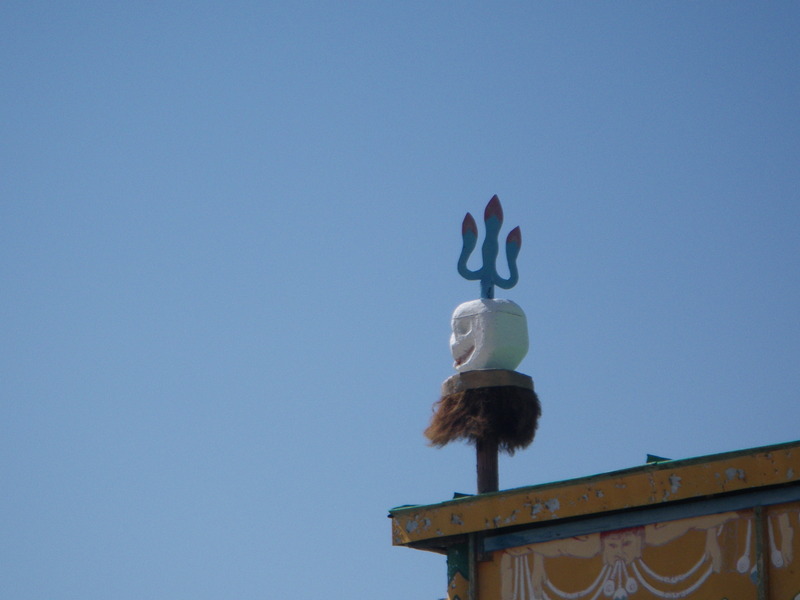

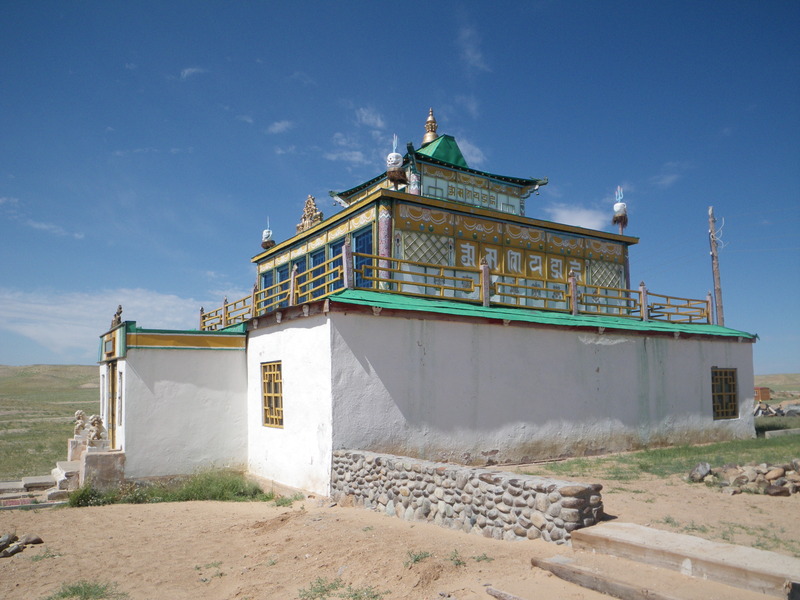
Inside one of the other small buildings, a blessing was in progress. I was told it was OK to take pictures of everything, except the Buddhas.
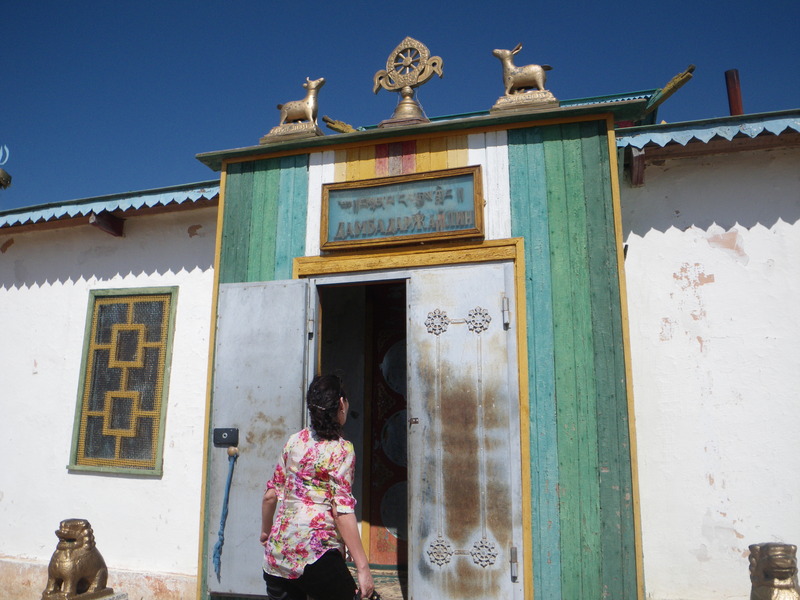
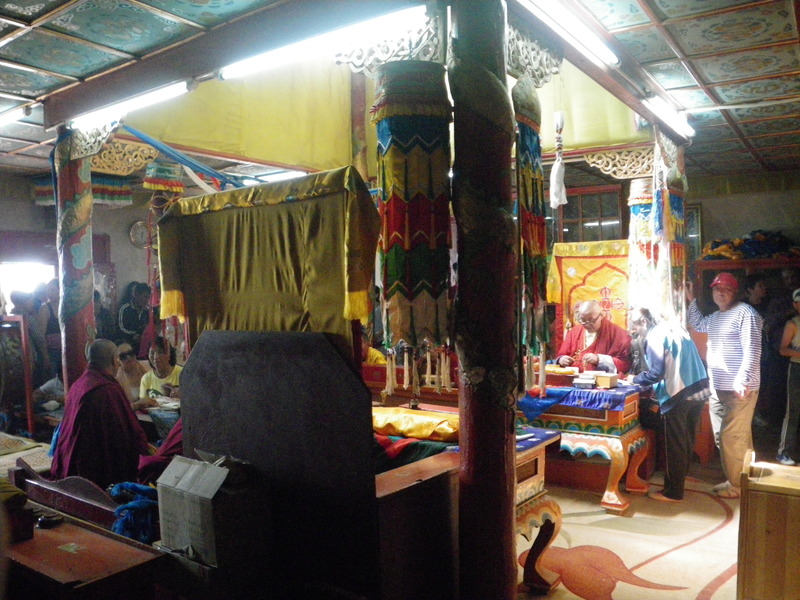
You may also look at this 22MB video clip, and another one that is 54MB.
These are clothing and musical instruments used by the monks.

This flag was flown on Mt. Everest.

This sheep's head and back was part of the offerings. I guess Mongolian Buddhists are not vegetarian.
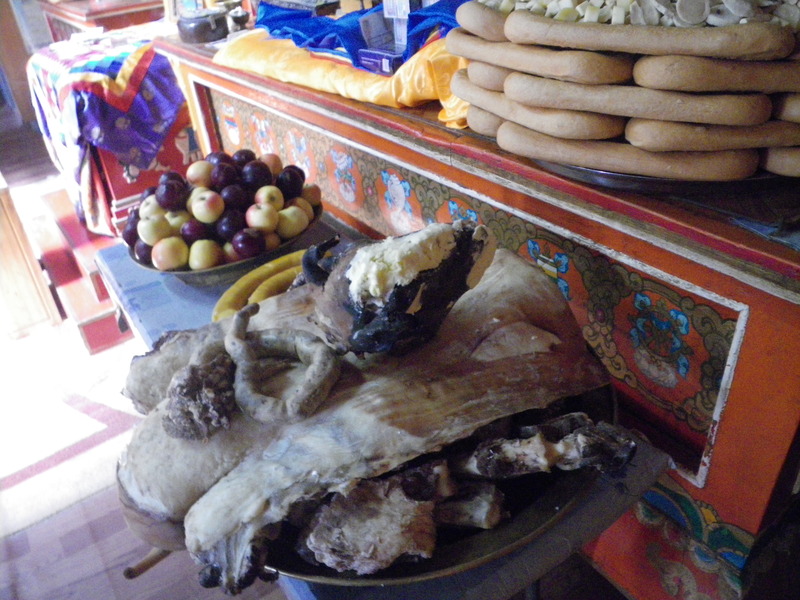
I was told monks of the red sect, which is in charge of this monastery, can even marry.
And this is the great man himself, Danzanravjaa, in what is clearly a modern portrait. As you can see, Mongolian is written using the Cyrillic alphabet, a legacy of many years of Soviet influence.
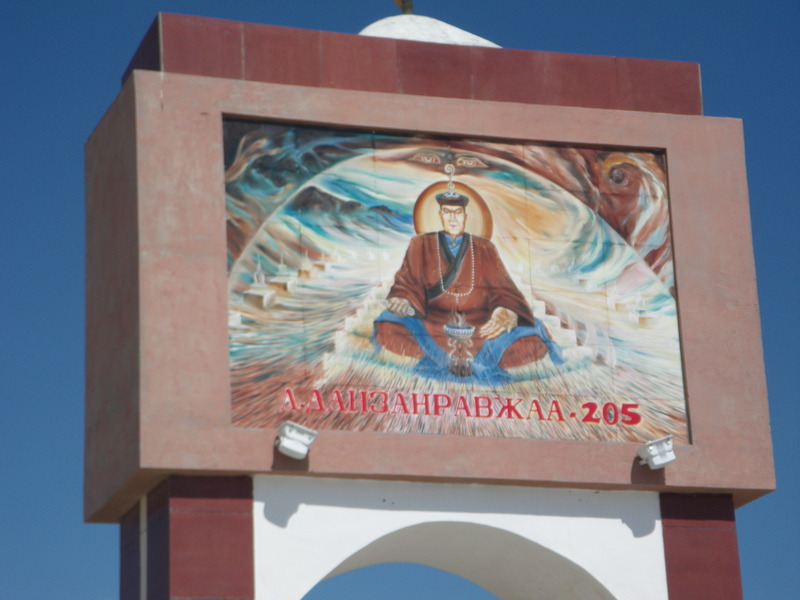
There are a number of holy sites that can be visited on a 7.8km tour beginning at Khamar Monastery.

The first site is a pair of giant breasts, built to honor women, and particularly Danzanravjaa's mother.
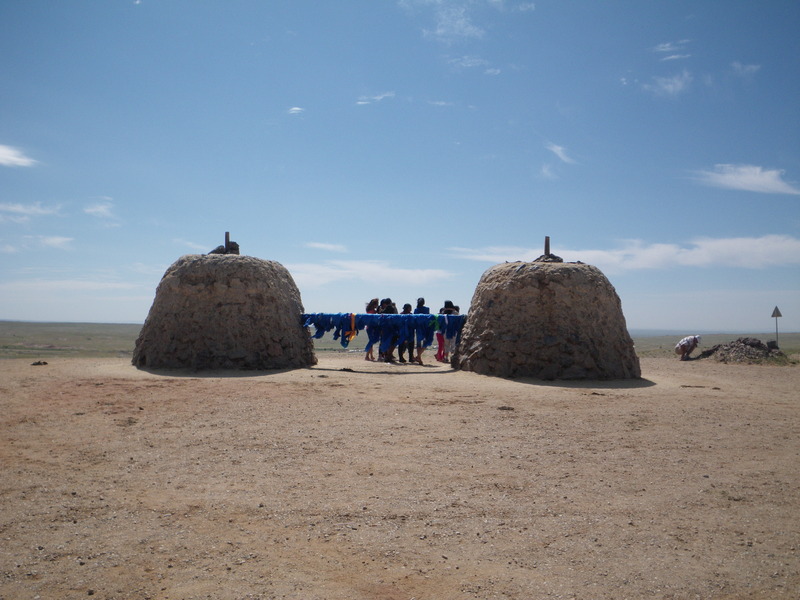
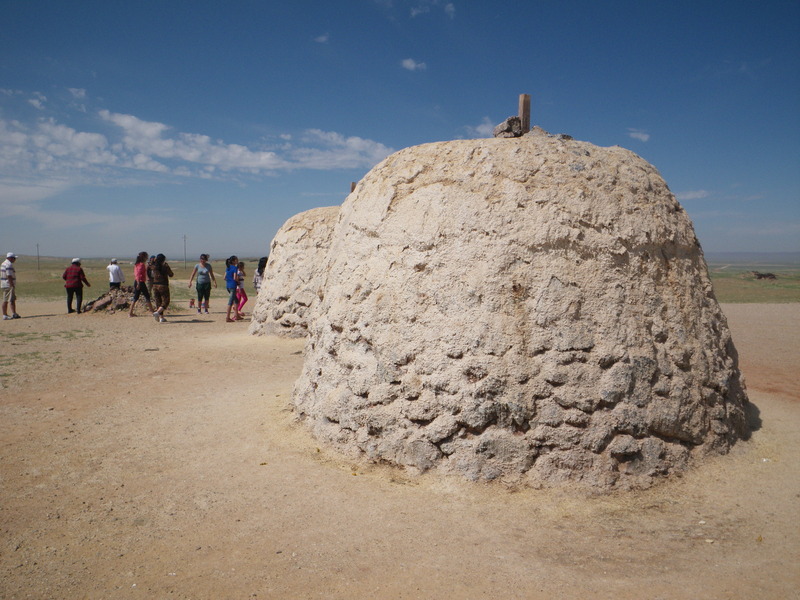
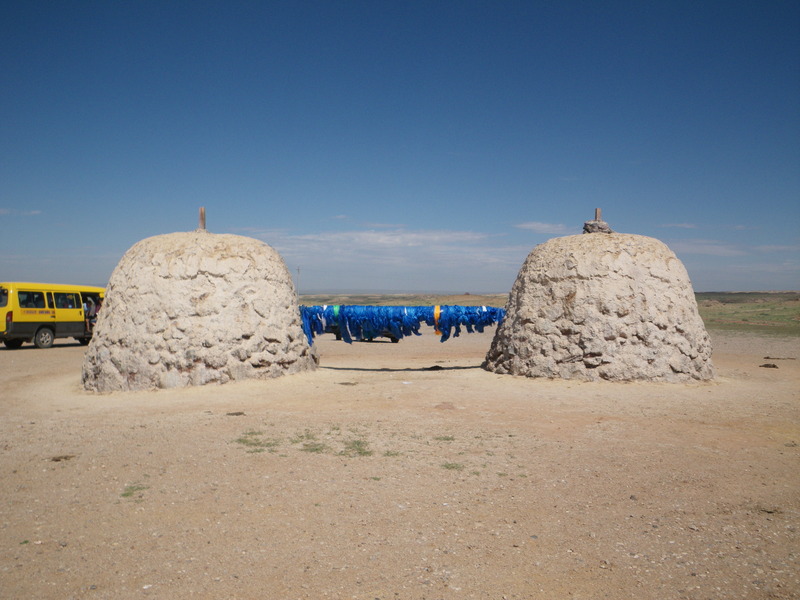
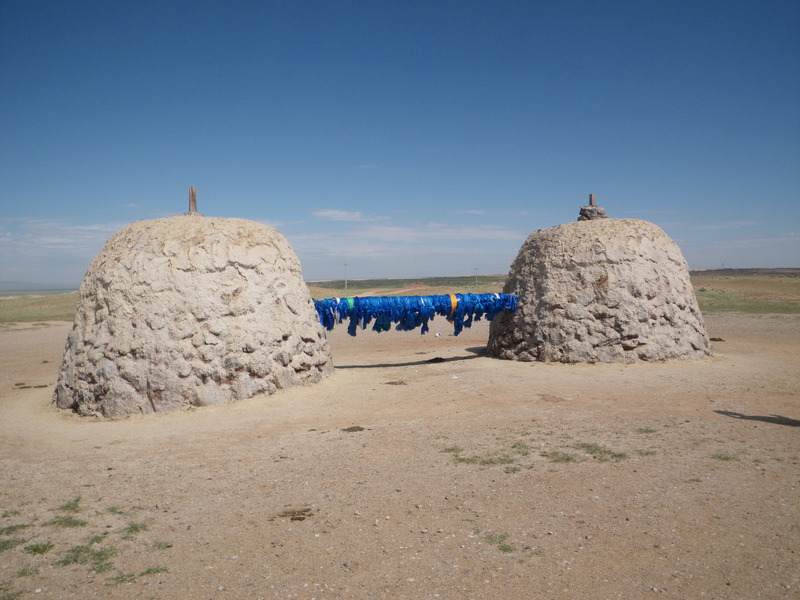

As a man, I was told I should not touch or worship these breasts, because a man should worship his wife's breasts instead. This seems very reasonable.
Some of the women I saw had just poured milk on the breasts as an offering.
The breasts are really close to Khamar monastery.
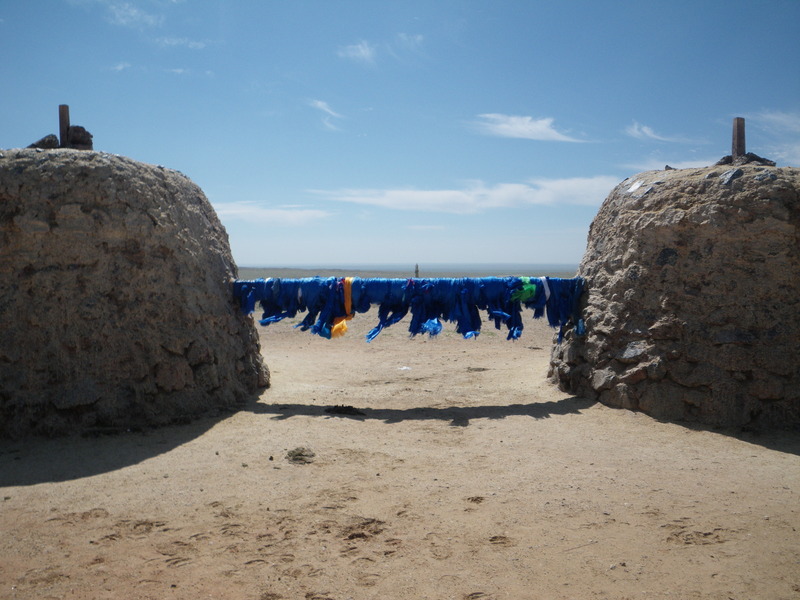

The next stop on the circuit is the Bell of Heaven.
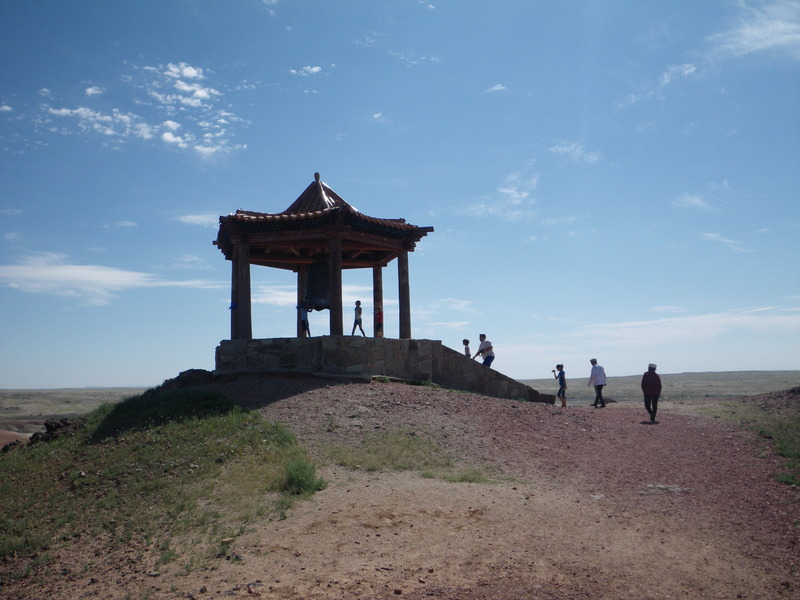

I talked to one man here who said he was showing the area to his family, who had driven 2,200km from Western Mongolia to come pray at this temple. A modern pilgrimage, and quite impressive considering that many of the roads in Mongolia are unpaved.
I rang the Bell of Heaven, I stood inside it while someone else was ringing it, and I shouted inside of it.
The Bell of Heaven is at the edge of a slight escarpment, maybe 20 or 30m above the land to one side. This makes the Bell of Heaven visible for a long ways.
Below the Bell of Heaven, some children had "played house" by moving stones to create the outline of a Ger, and placing symbolic furniture inside.
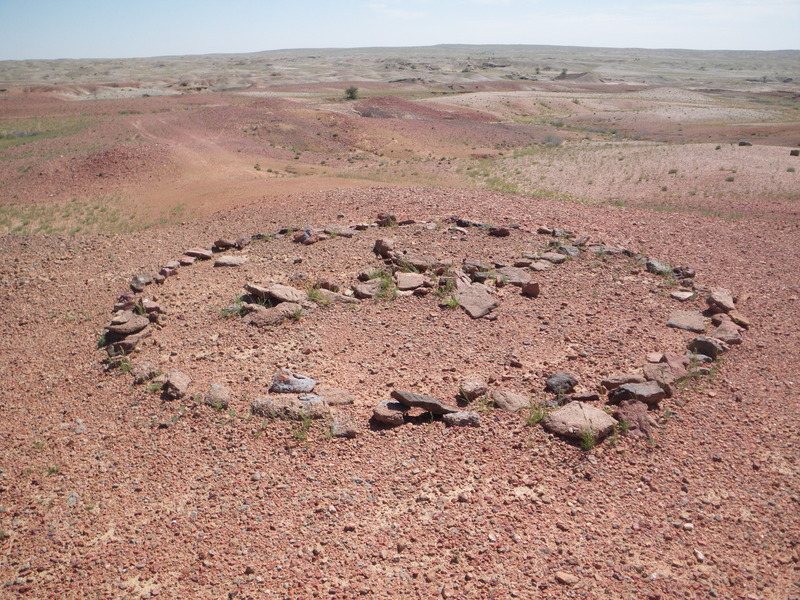
The rocks around the Bell of Heaven have a reddish color.
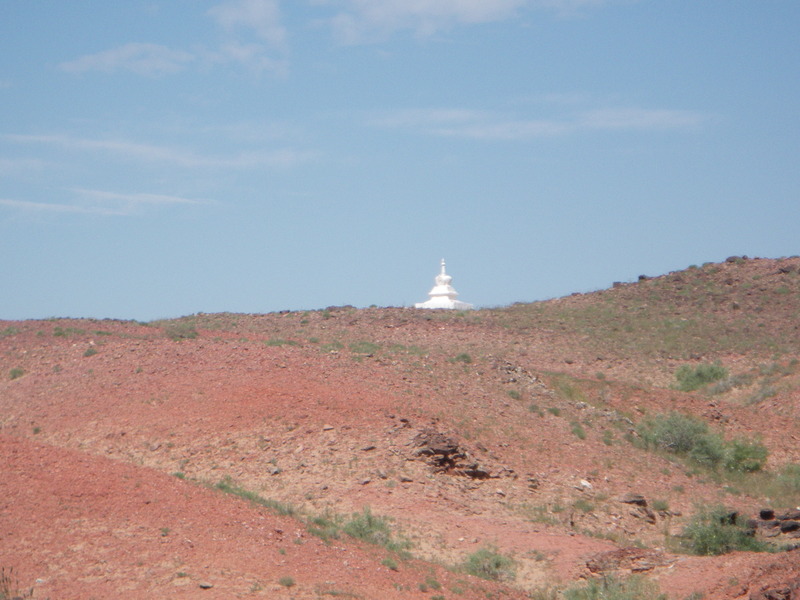
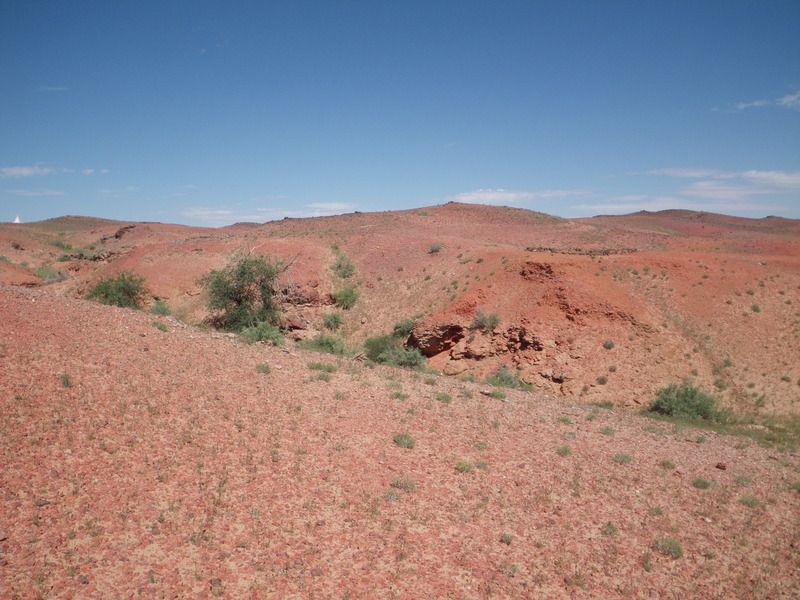
A small bush with beautiful blue flowers, almost lavender colored, grows in the dry watercourses. It may or may not be Caryopteris mongolica.

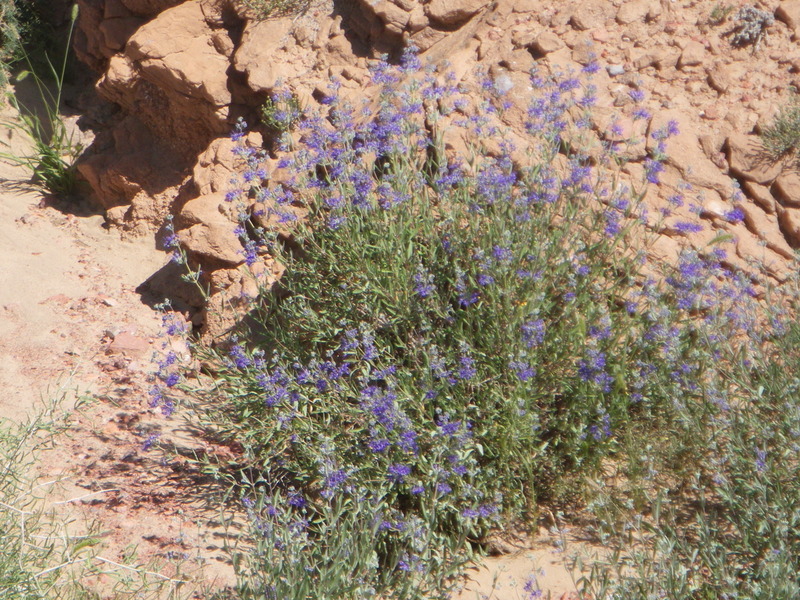
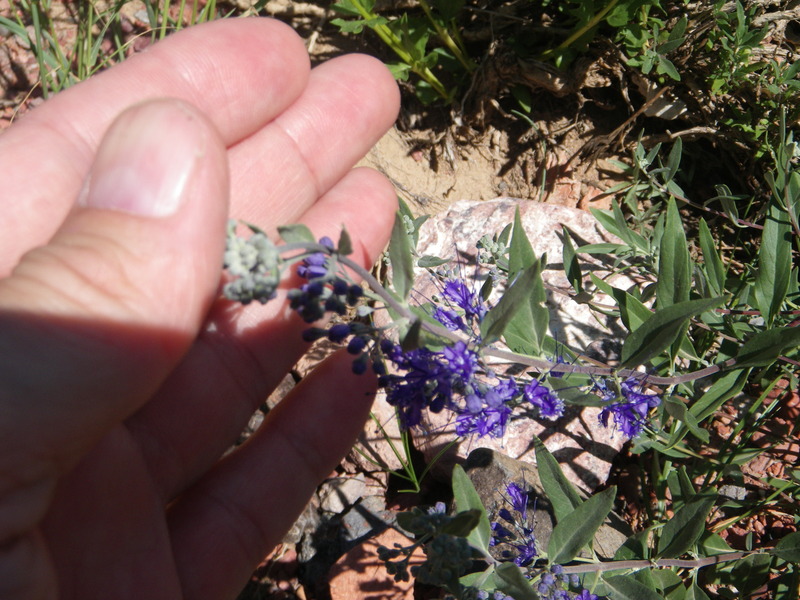
The next stop was Shambala, where heaven is very close to earth. Here, 108 stupa are arranged around a square open to the sky. I liked that the focus was on the open space within the 108 stupa rather than on any building.
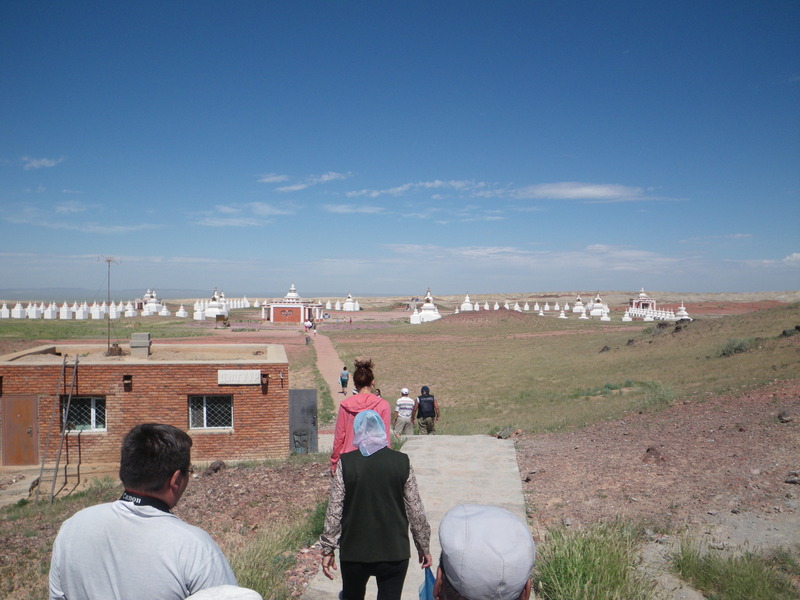
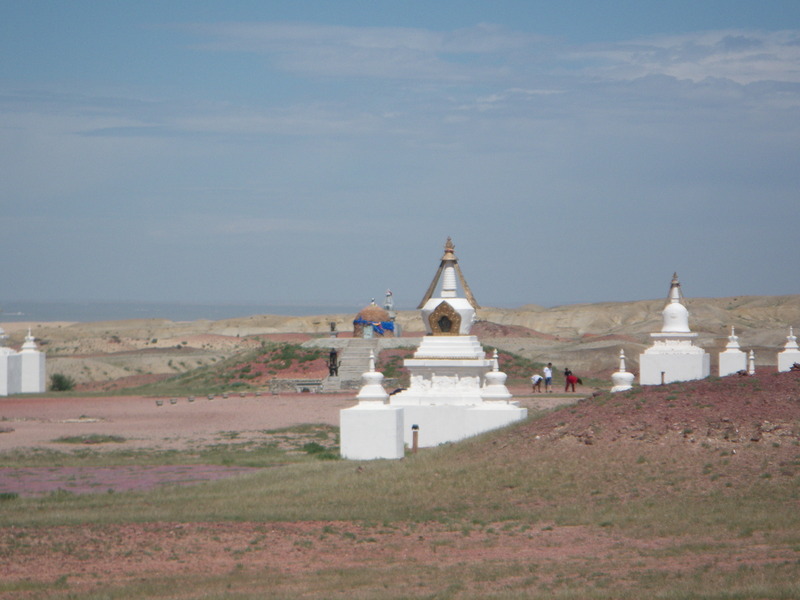

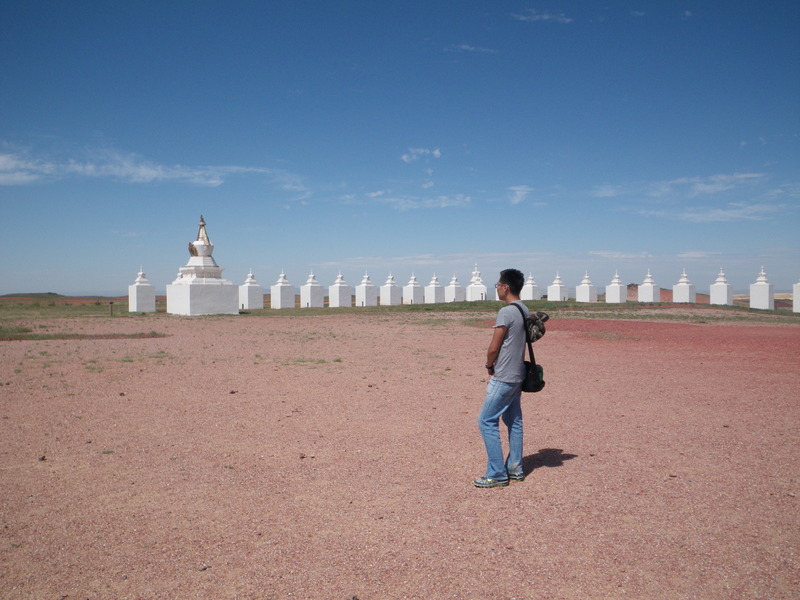
Circles within the enclosure mark places to put offerings. I poured some water into one of them, other people have placed seeds. There are other places to put offerings as well.


An area of red gravel marks a place with very strong energy, and can be seen on the right in this picture.
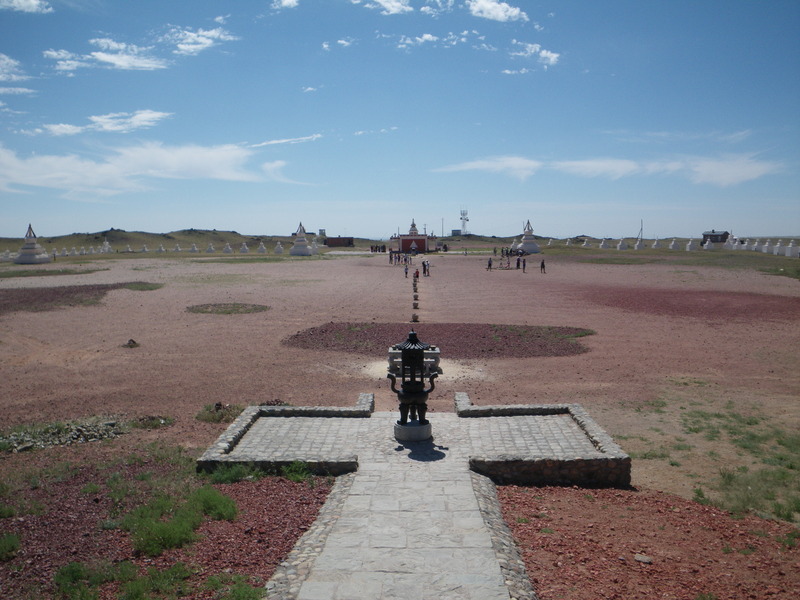
Supposedly, standing on the red gravel and calling others on a cellphone is a way to transfer the energy to them also. This might explain the cellphone tower in the very back of the picture above. I suspect this is not a very ancient tradition.
The back of Shambala has a couple of interesting structures and a couple of lion statues.
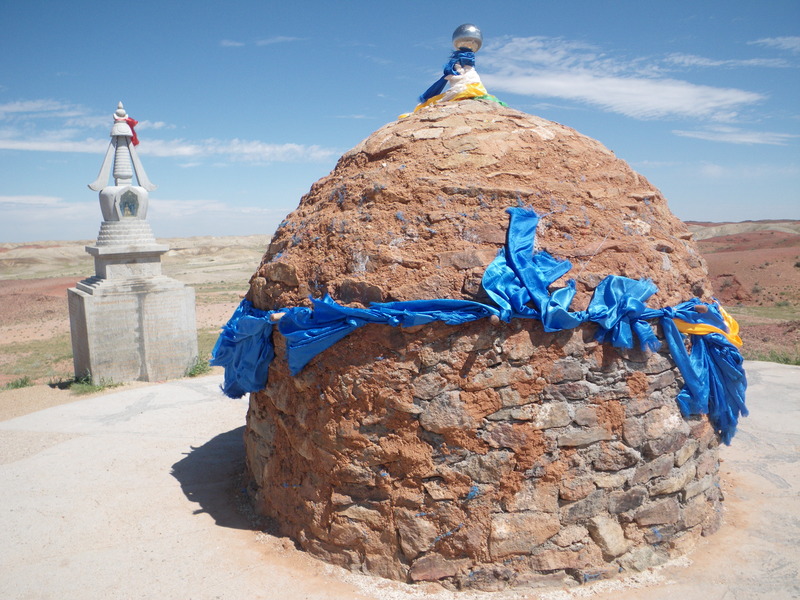
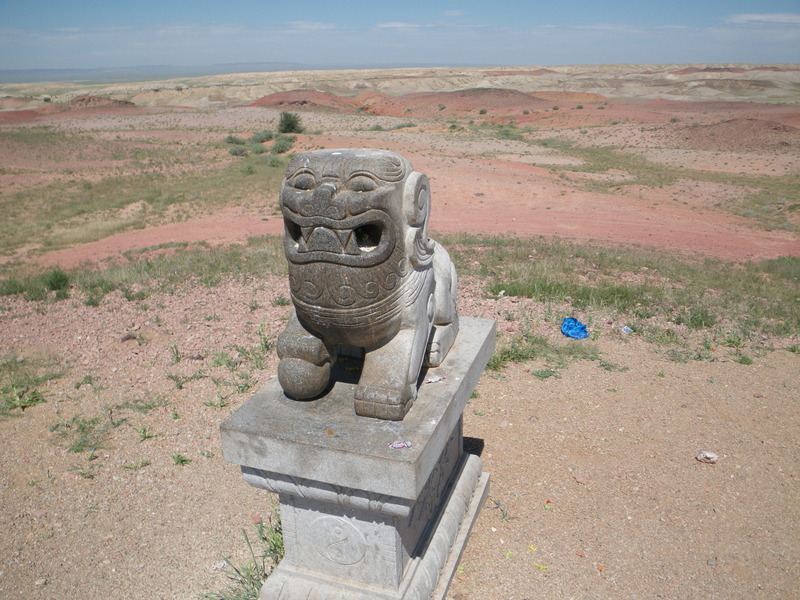
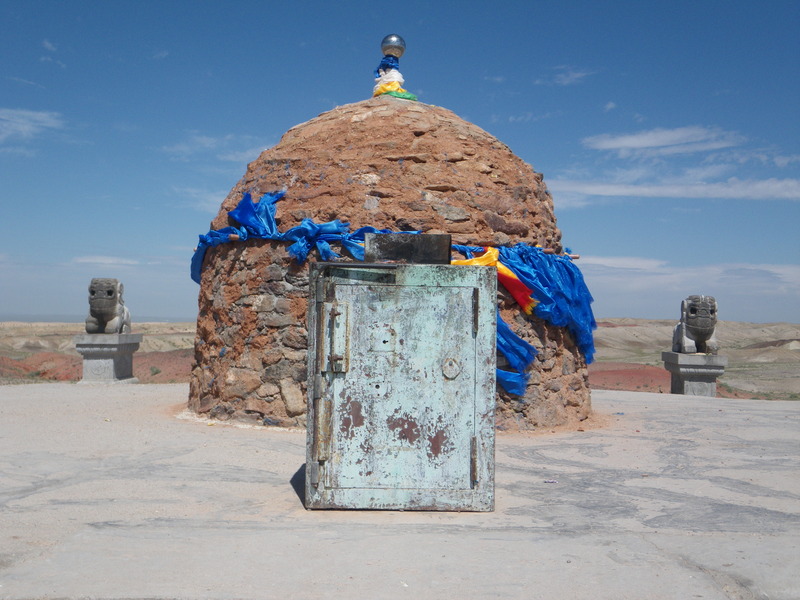
The entrance gate has eyes painted on the side, and there is a spot designated to stand and look at the eyes. I believe one of the two people on the left in the second picture are standing at the designated spot.
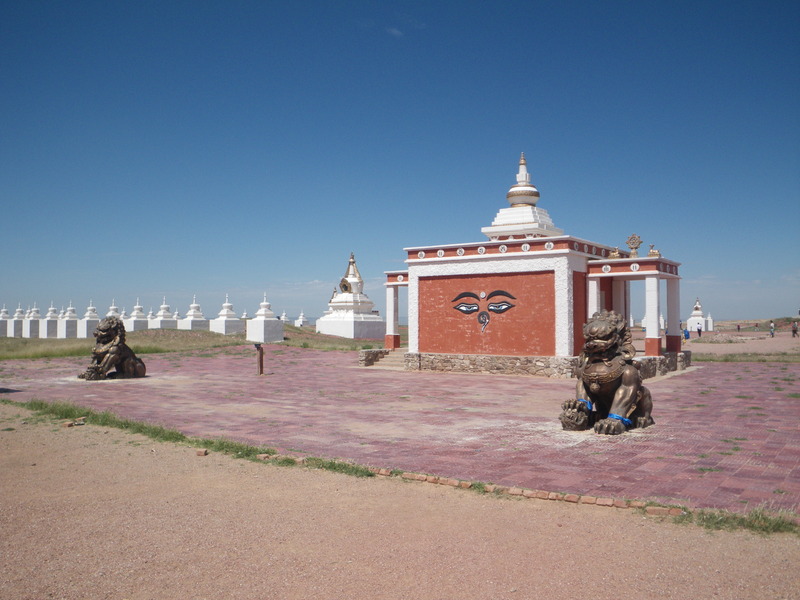
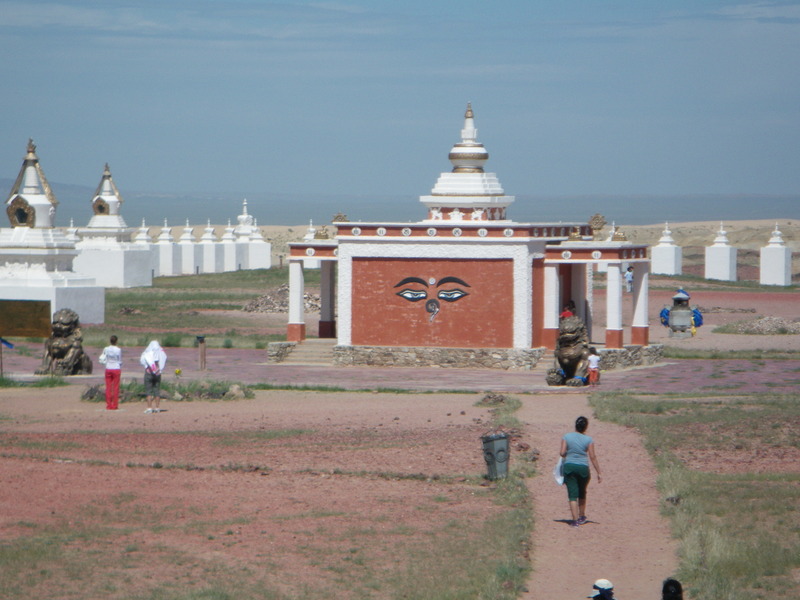
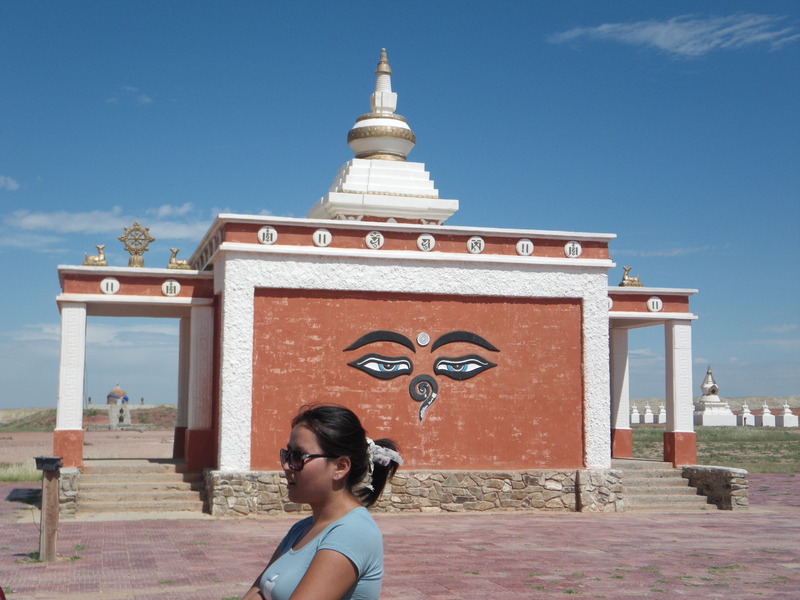
In Shambala I saw a couple of nice ravens and a hawk or similar bird.
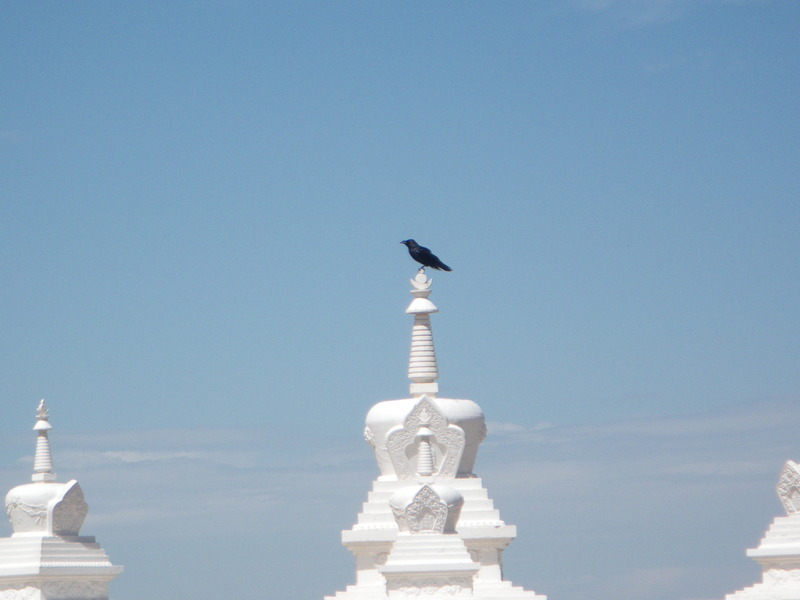
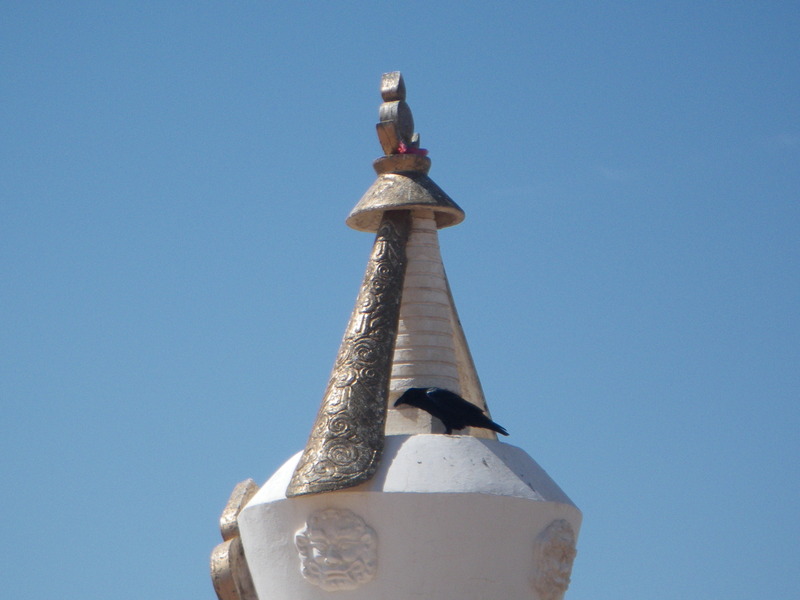
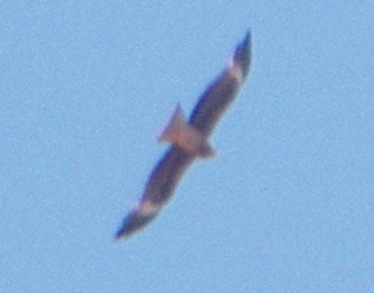
The final stop on this sacred circuit is a collection of 108 meditation caves. The ones I saw were on the side of a ravine, where the ravine opens onto the escarpment.
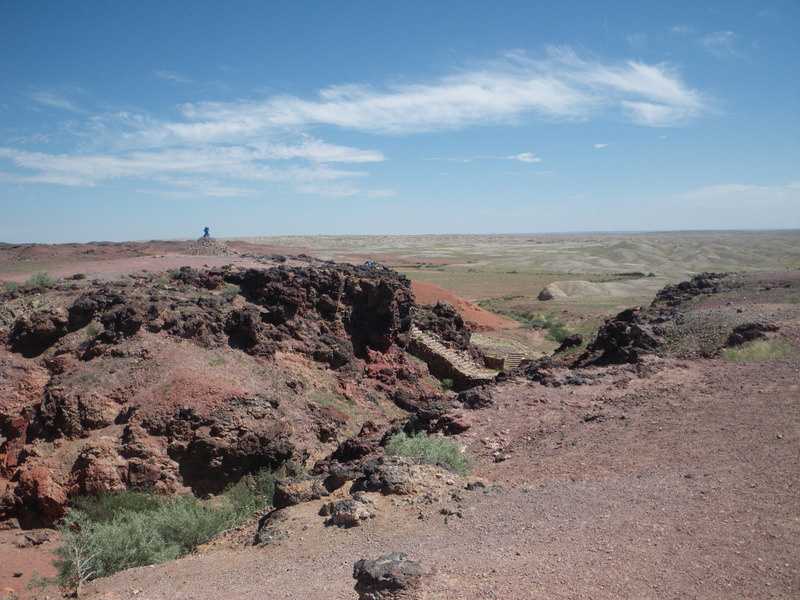


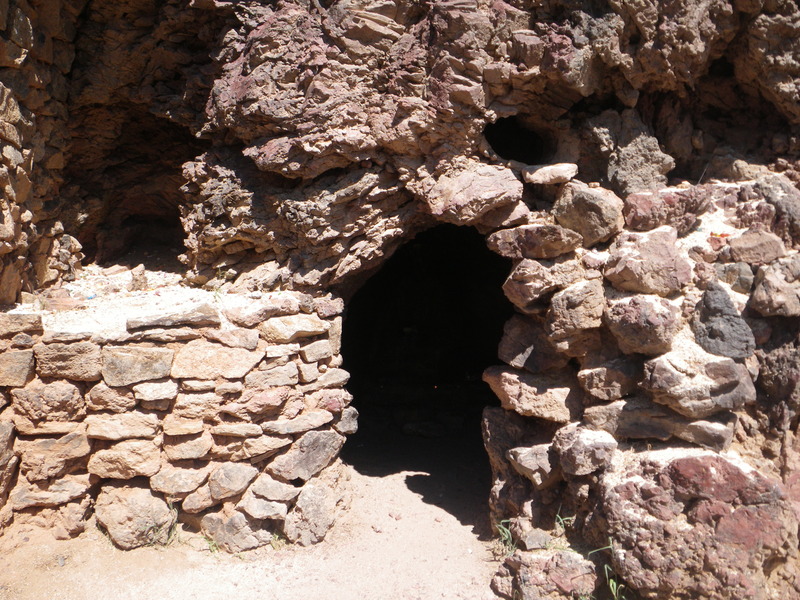
There is also a natural arch forming a tunnel, called the mother's vagina. Going through it, one can be reborn. I went through it.
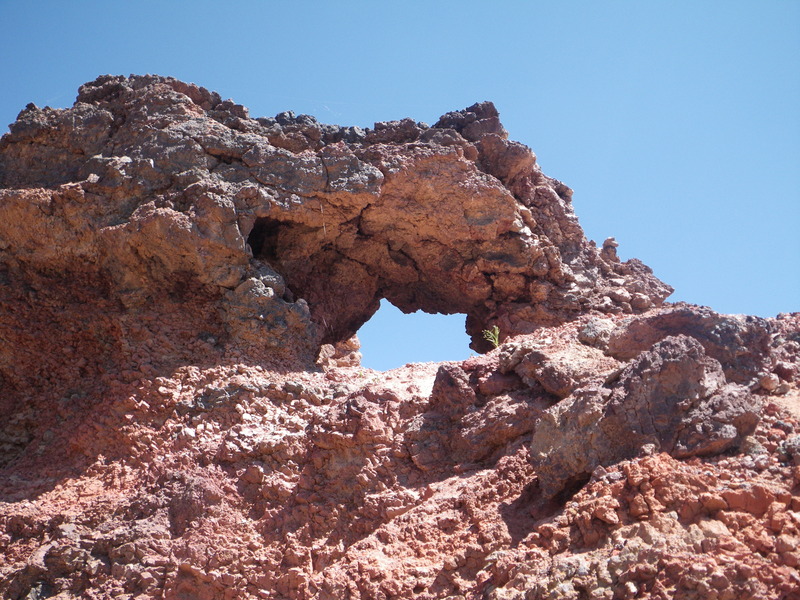
After the meditation caves, we went to low side of the escarpment to look at a fossil, probably of a dinosaur.


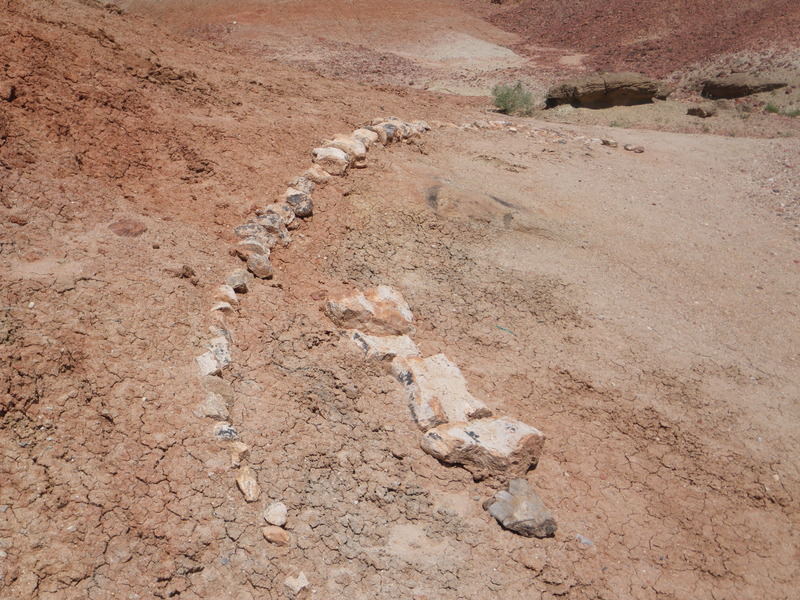
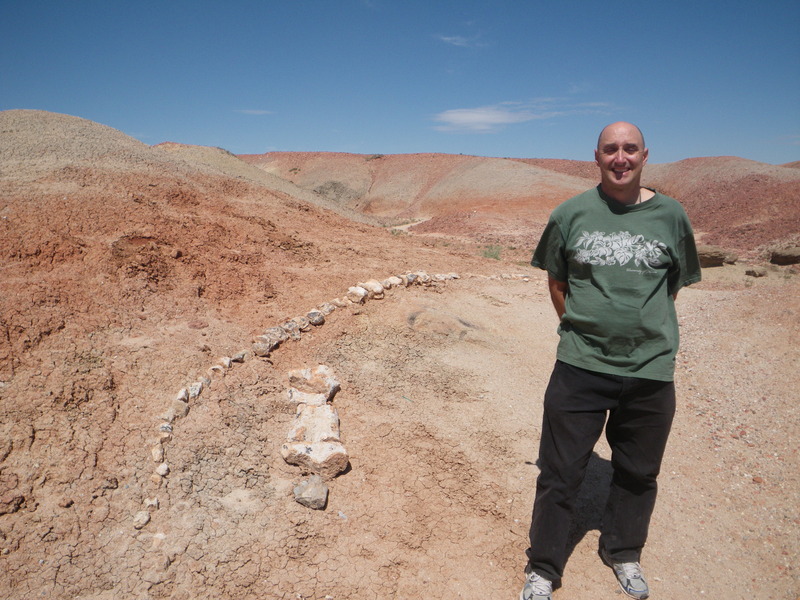
Also some petrified trees.
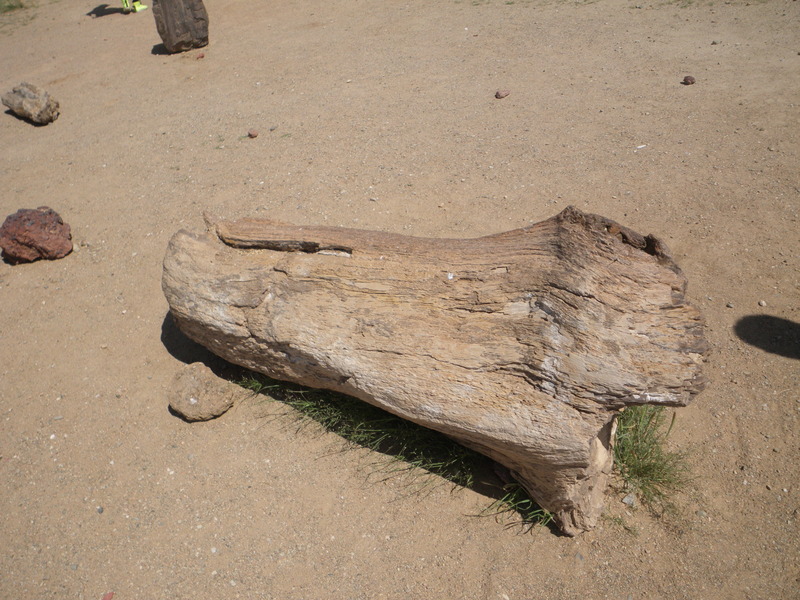
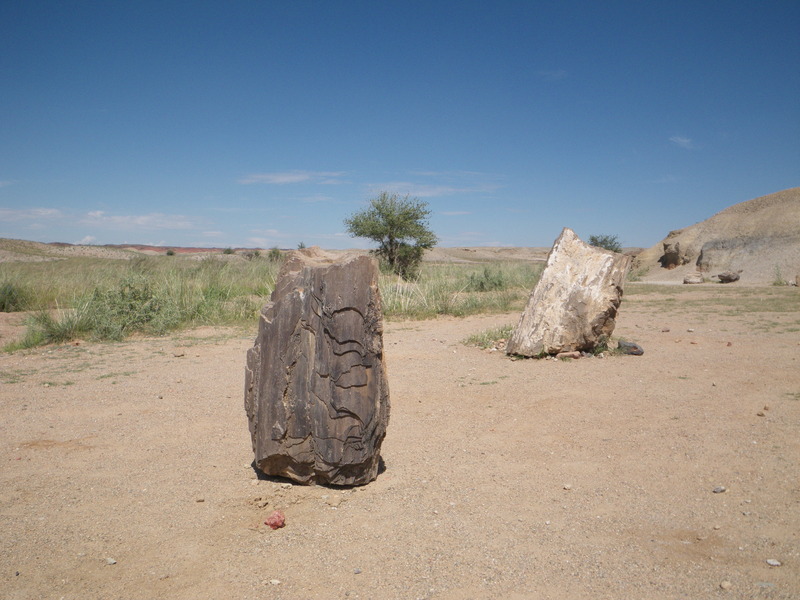
Since coming to the Gobi, I have seen no trees as large as these petrified ones. I understand that Mongolia used to be a jungle until the Himalayas started to form. The Himalaya stopped the moist South winds, and Mongolia became a steppe and a desert instead. So these petrified trees are evidence of a wetter time when bigger trees were common.
As the final stop in our circuit, we went back to the monastery, where there was a well.
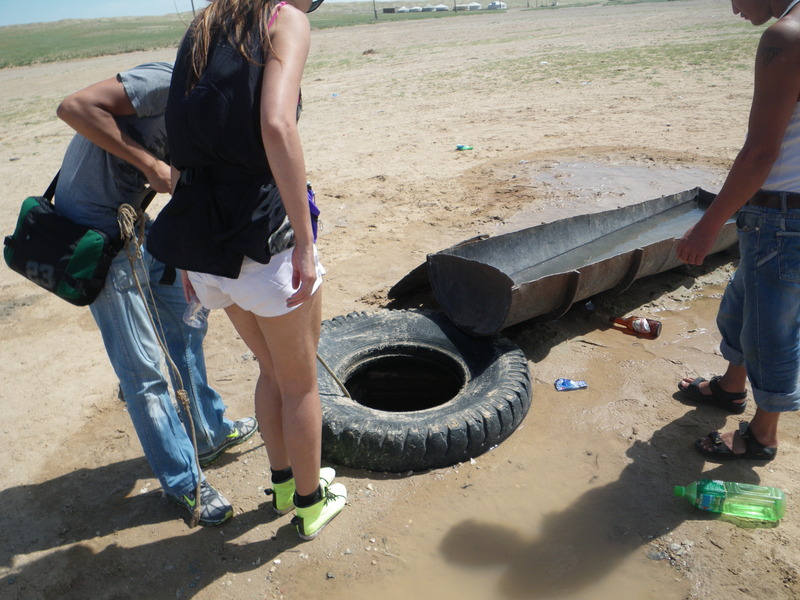
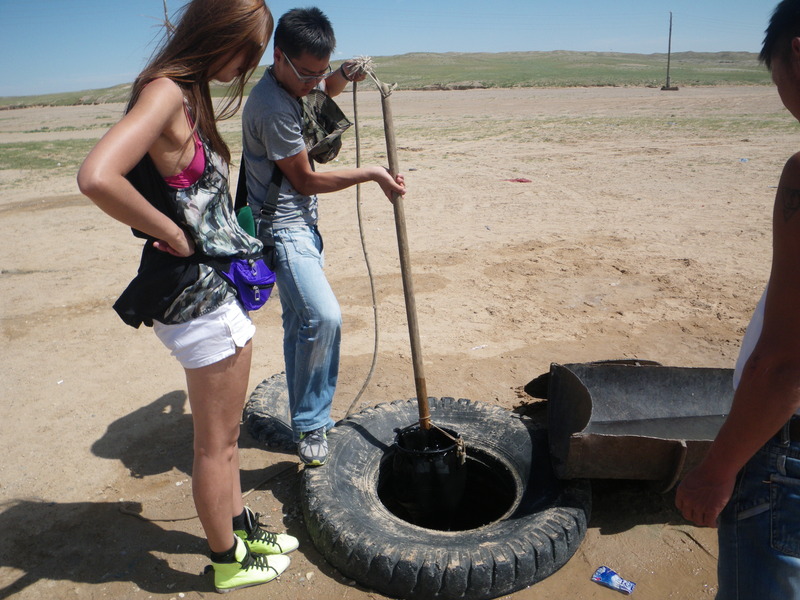
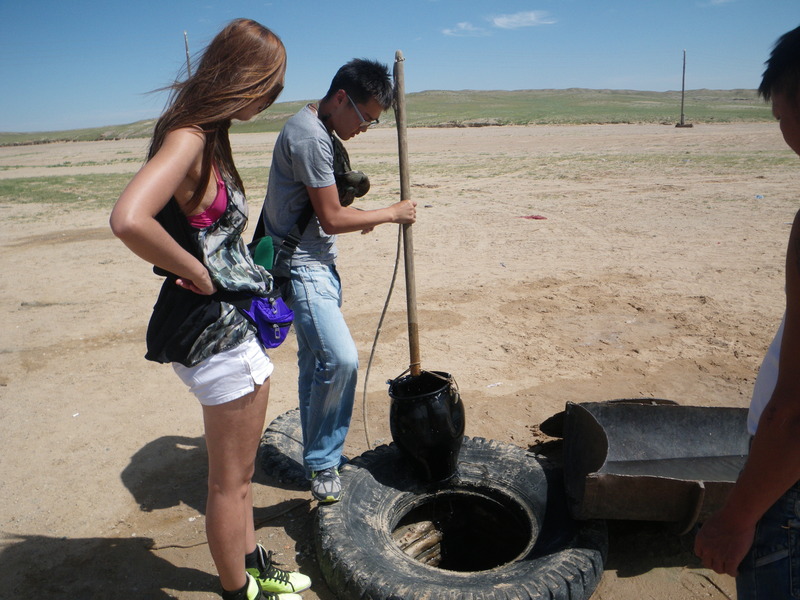


In the last picture, you can see the water at the bottom of the well. The water was cold.
Whenever there is a mound of stones on a hill, that is a holy site. If one wishes to follow proper procedure, one should pick up three stones, then walk around the mound clockwise (always clockwise) three times, each time tossing one of the stones onto the mound and expressing a wish. I have seen many such mounds, and no shortage of stones to toss onto them.
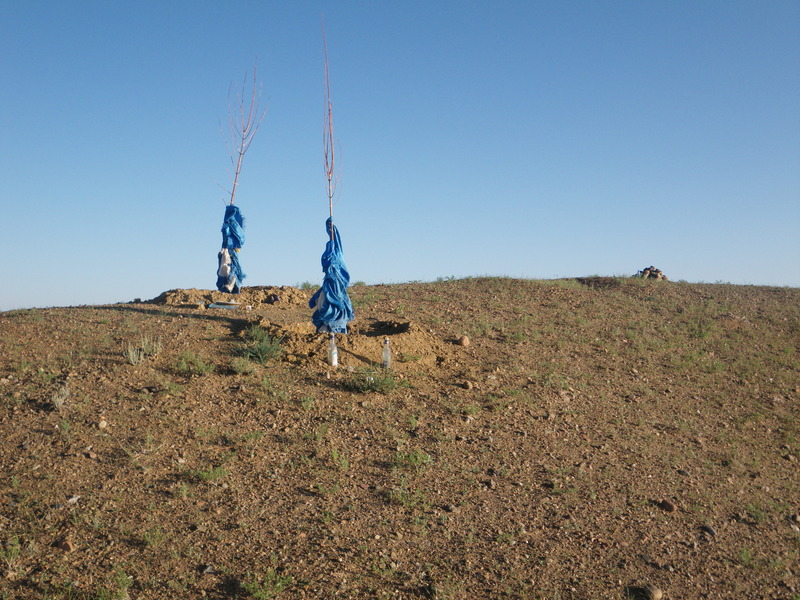
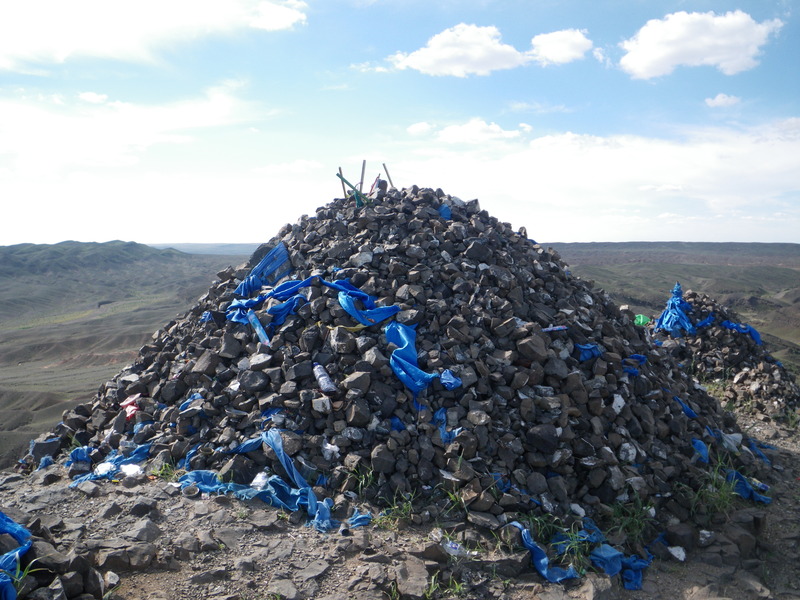
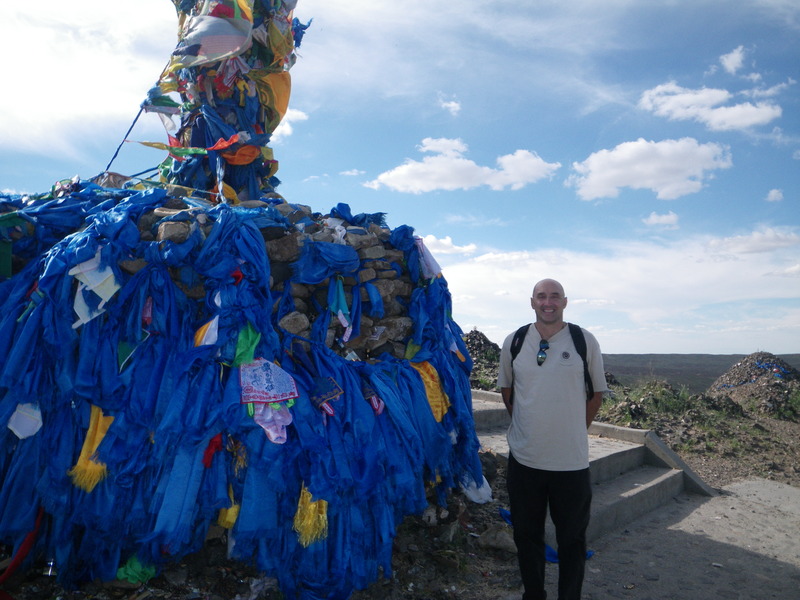
One mound had a pair of metal crutches.
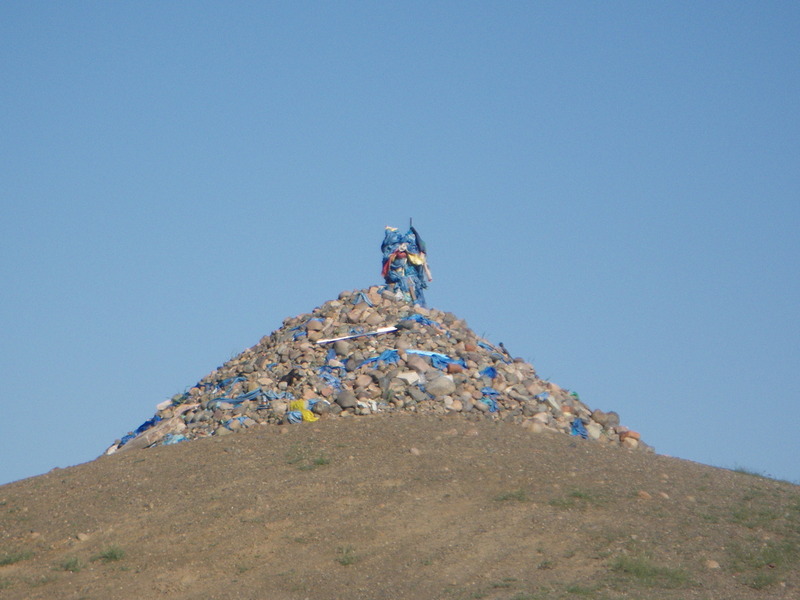

This mountain is a particularly sacred site.
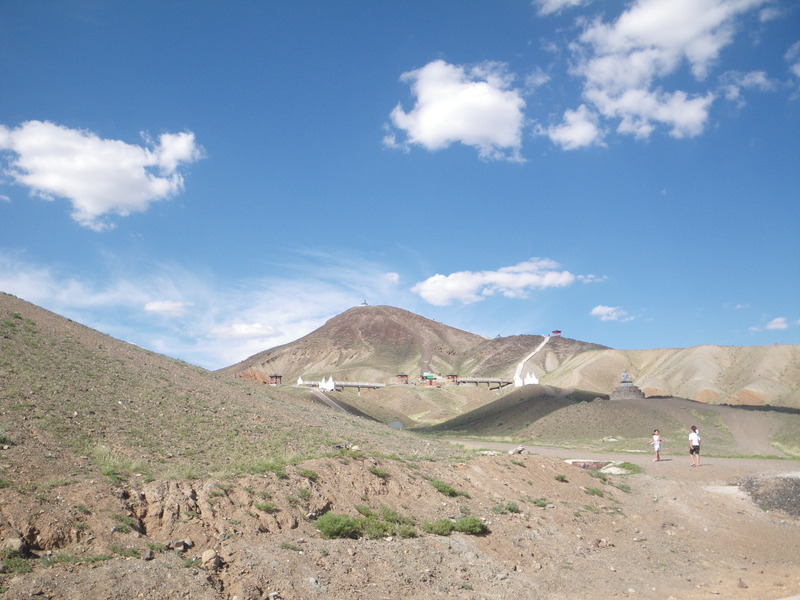
It has many stupa and a statue of Buddha on the approach to the summit. They all look new.
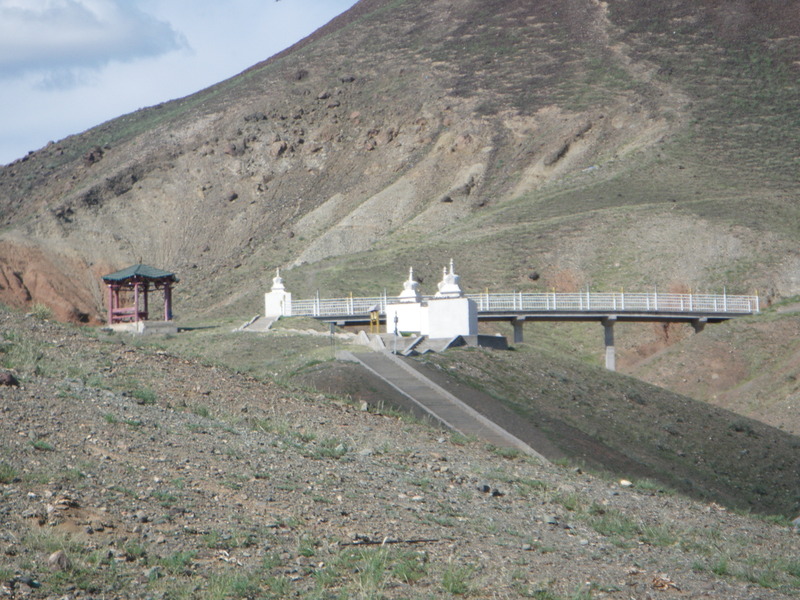
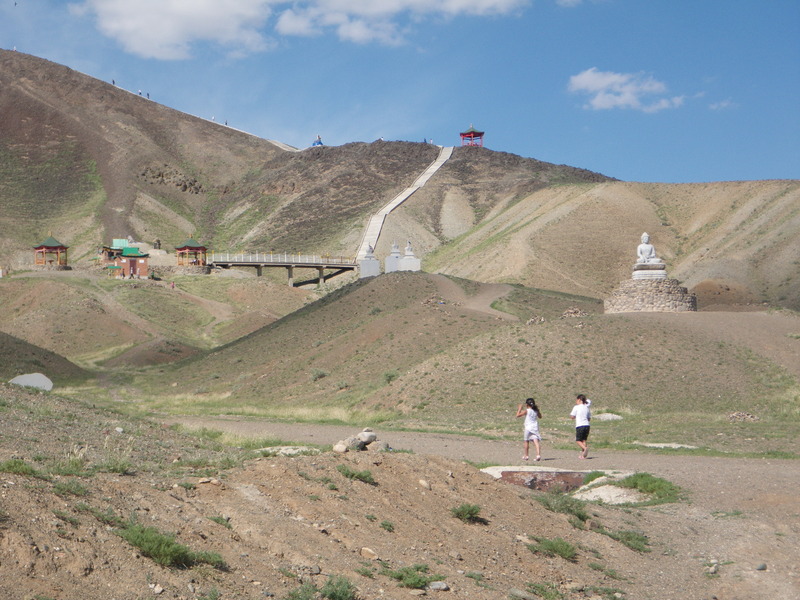
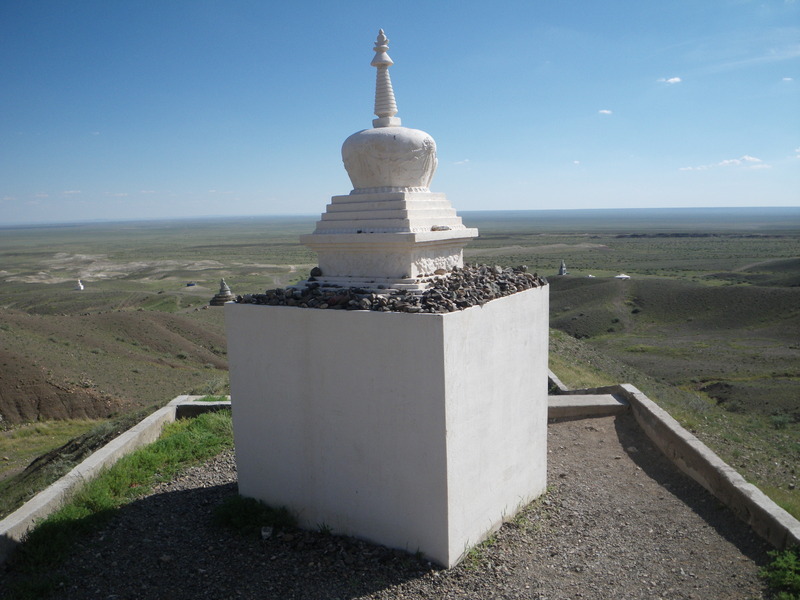
The very top of the mountain is off-limits to women, but women are allowed up to this platform on the shoulder of the mountain.
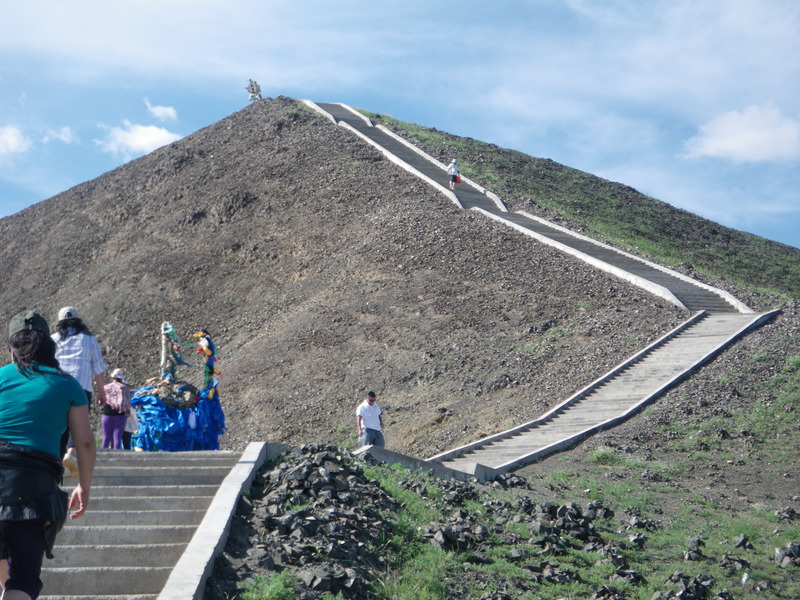
Besides these officially sacred sites, I personally find the sunsets in the Gobi are also very inspiring.
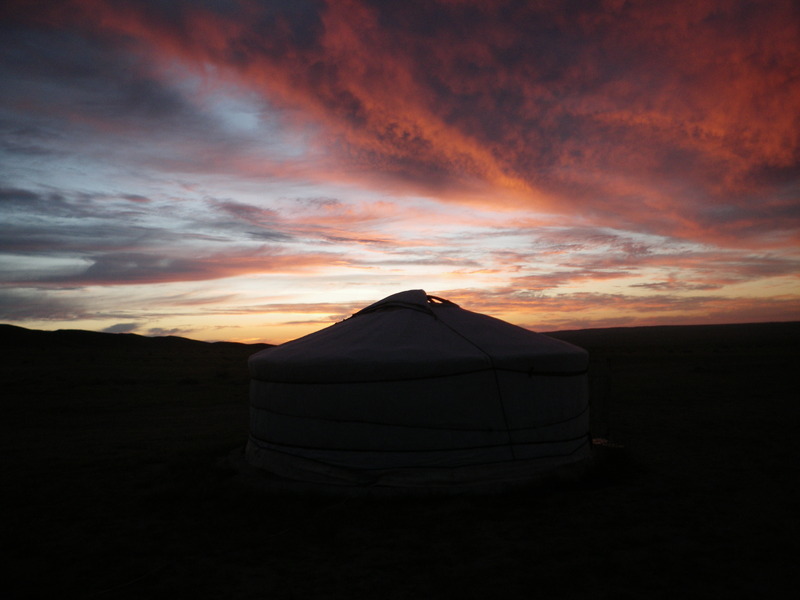
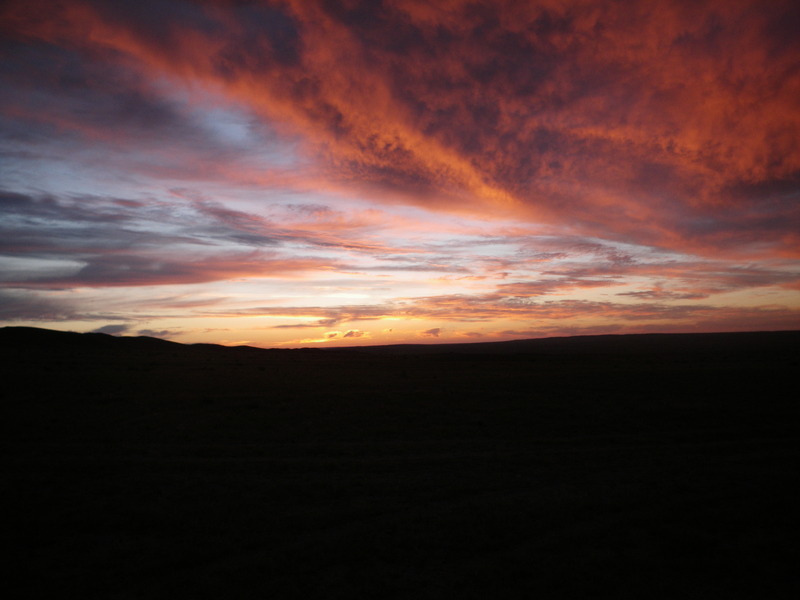
The Mongol warriers were famous for their horseback prowess. This area of Mongolia is still full of horses.
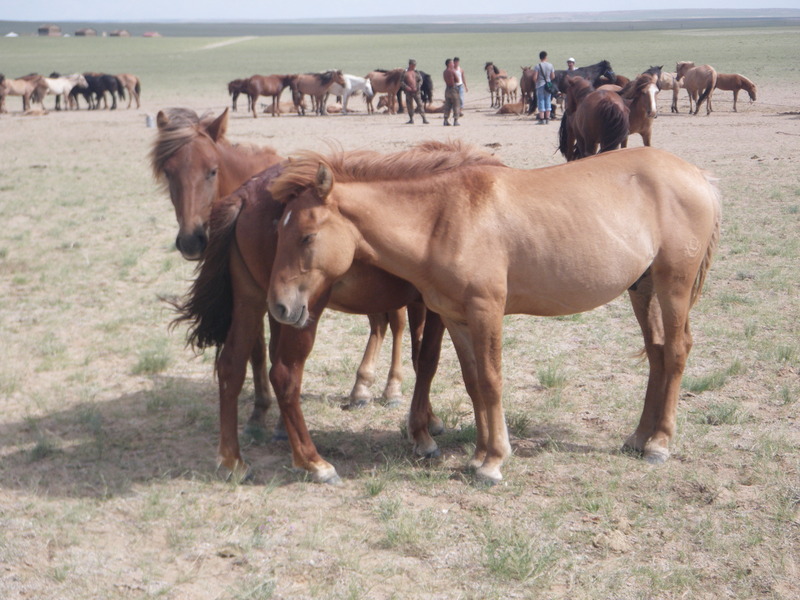
The mares are milked, and the milk is then fermented to make a drink that may be as potent as beer.
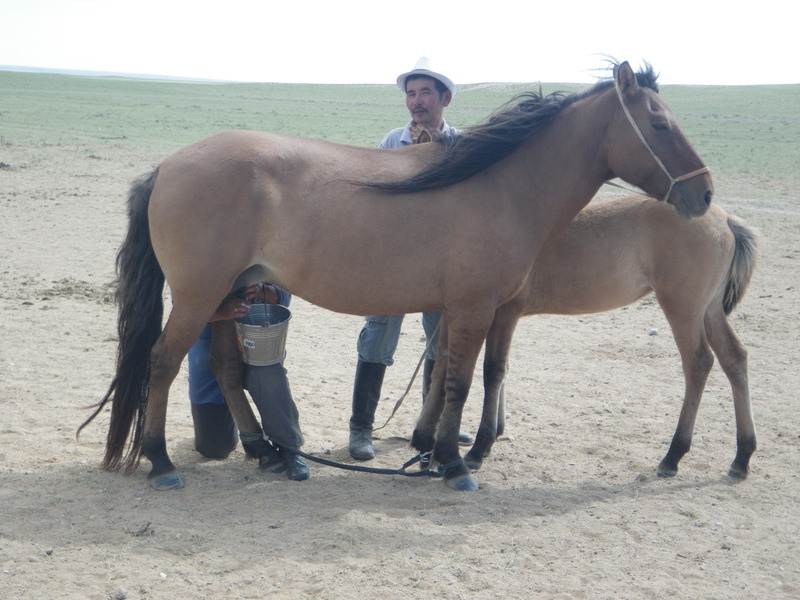
We agreed with the owner of these horses that we could go horseback riding. He had one tame horse, which we took turns riding on.
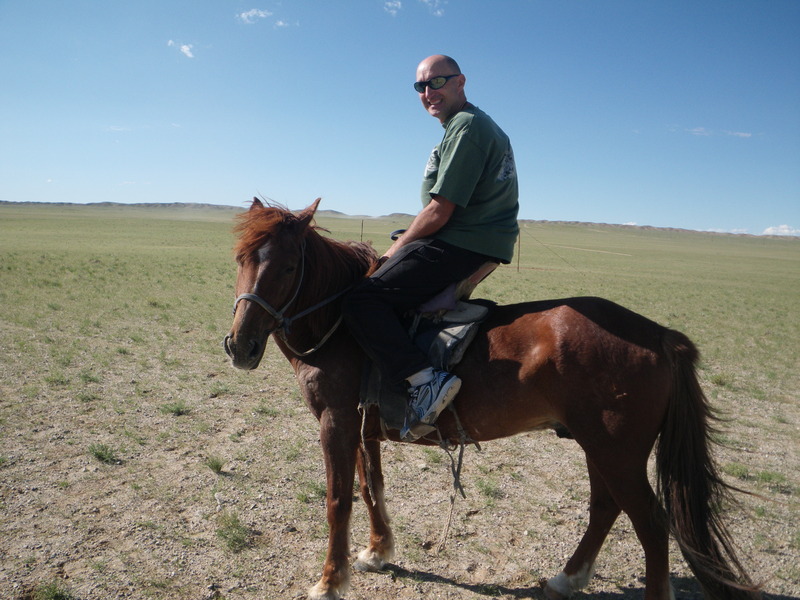
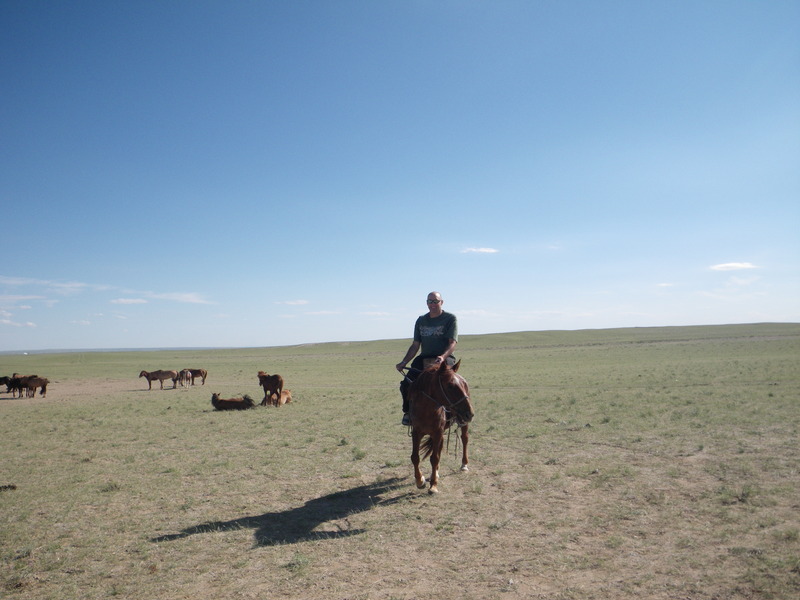
Unfortunately, the saddle was quite uncomfortable. This, coupled with my general lack of experience with horses, led me to not ride very far or very long. In contrast, all the Mongolians we saw riding were very skillful riders. The second picture shows a bareback rider breaking in a horse. Shortly after I took this picture, he was thrown off the horse. He got right back on the horse and continued the training. The military uniform, as I understand it, is just because every Mongolian man has to serve a year in the military.
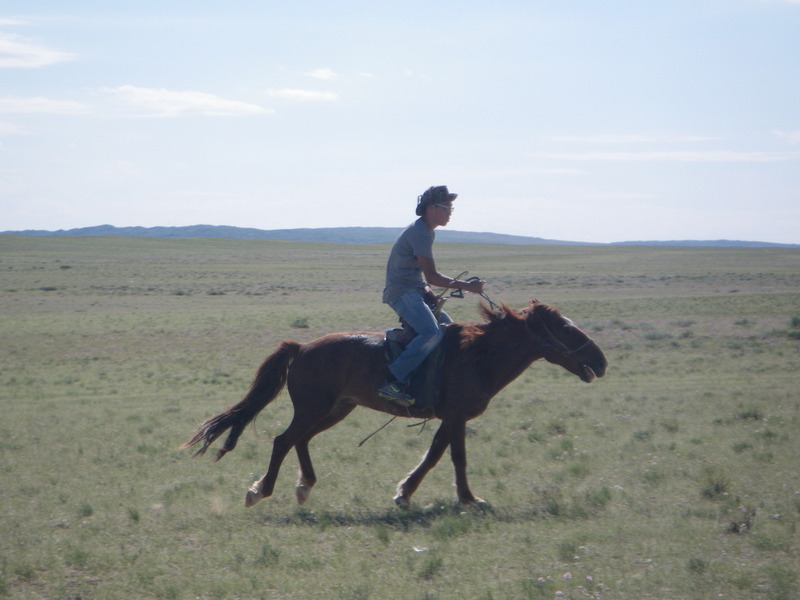
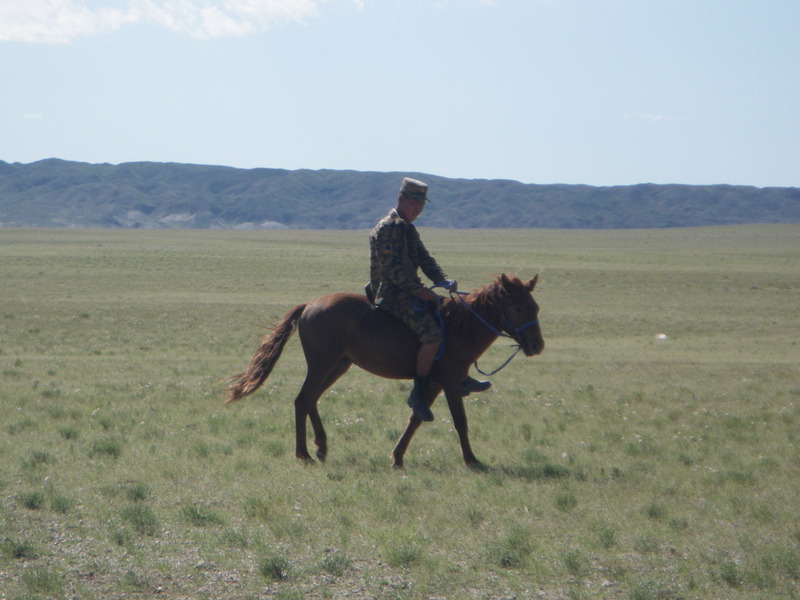
In any case, it was exciting to be on a Mongolian horse in Mongolia, even if I didn't particularly enjoy the ride.
Camel native to Mongolia have two humps.
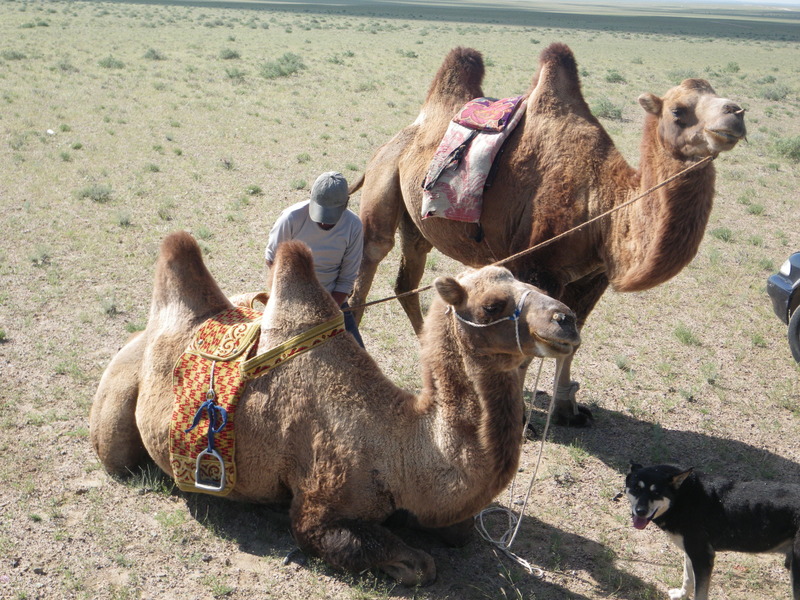
The humps are made of fat, so if the camel is thin, the humps are just floppy flaps of skin, but if the camel is fat, they are erect and firm. Here is a group with one fat camel and two thin camels.
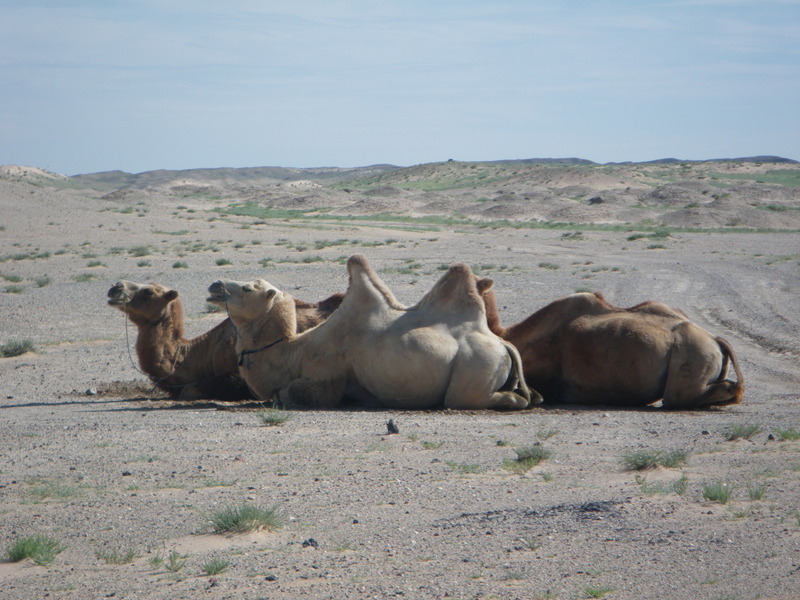
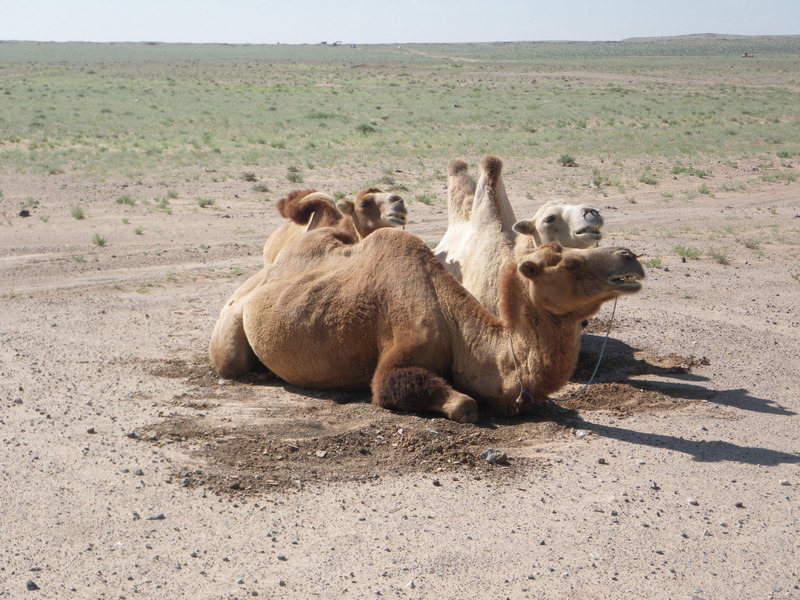
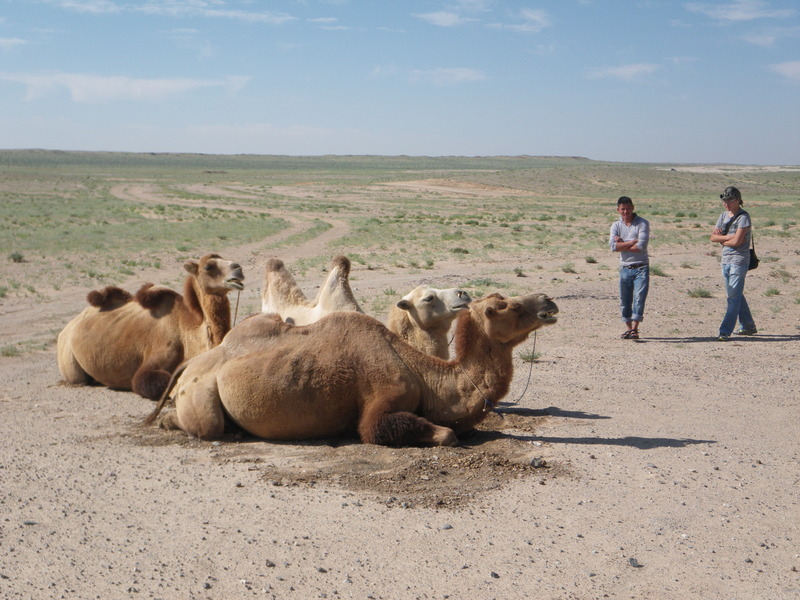
As part of the tour, one day we went riding on camels. The camels looked a little fierce, but they did not spit on us, which is the way they express negativity. However, they were extremely smelly.

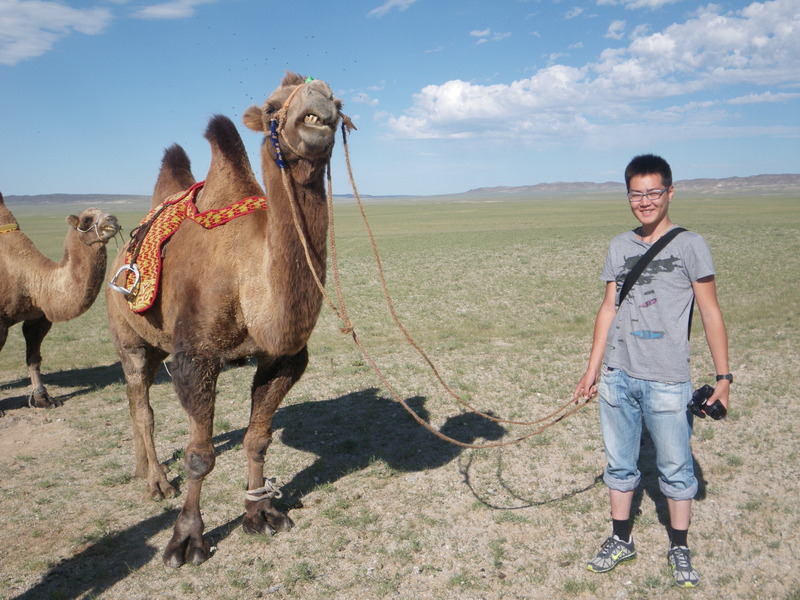
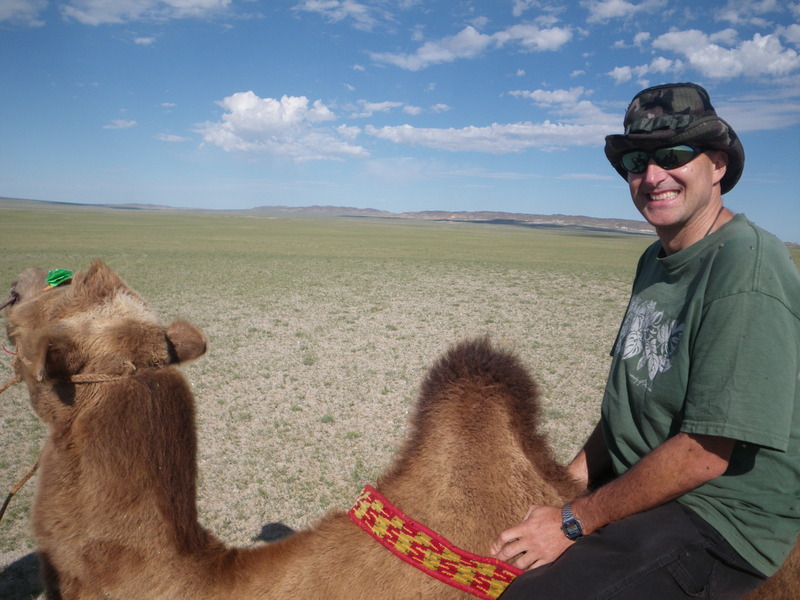
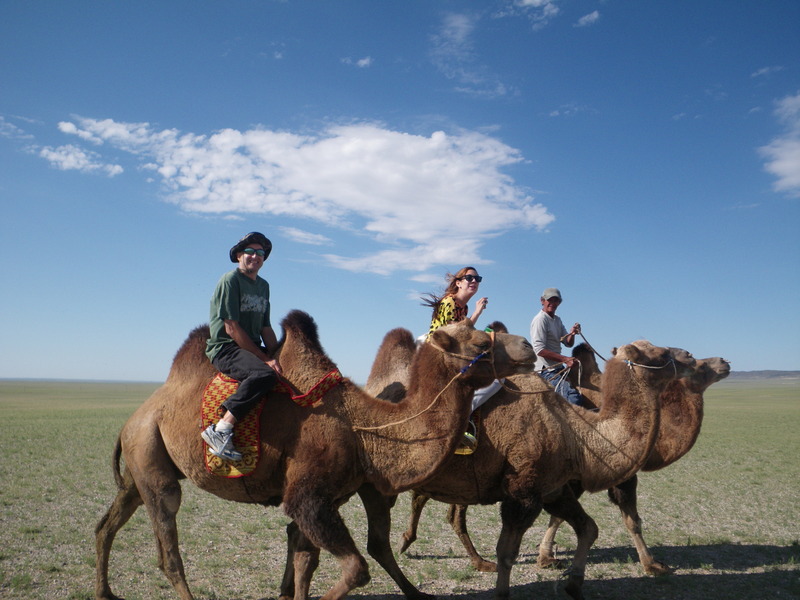
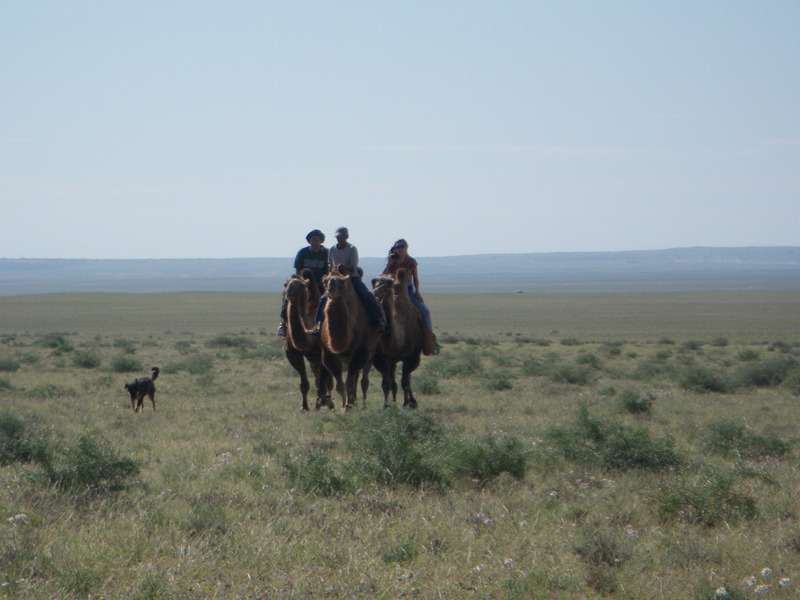
Our camels followed the lead camel, so we didn't have to figure out how to tell the camels what to do. I rather like the way the camel heads look.
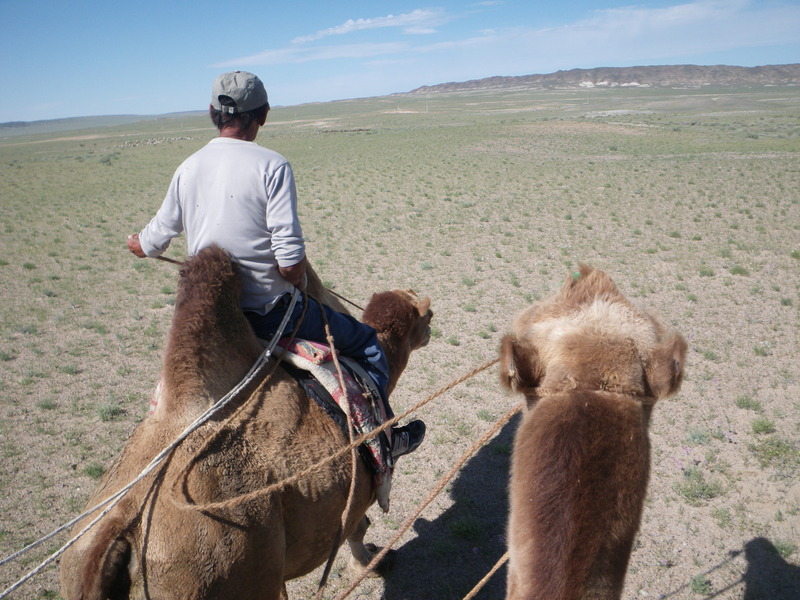
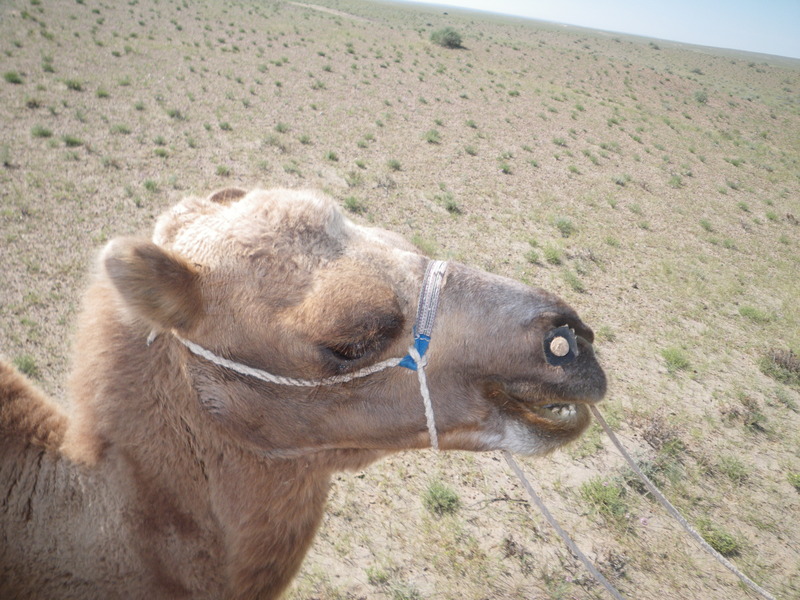
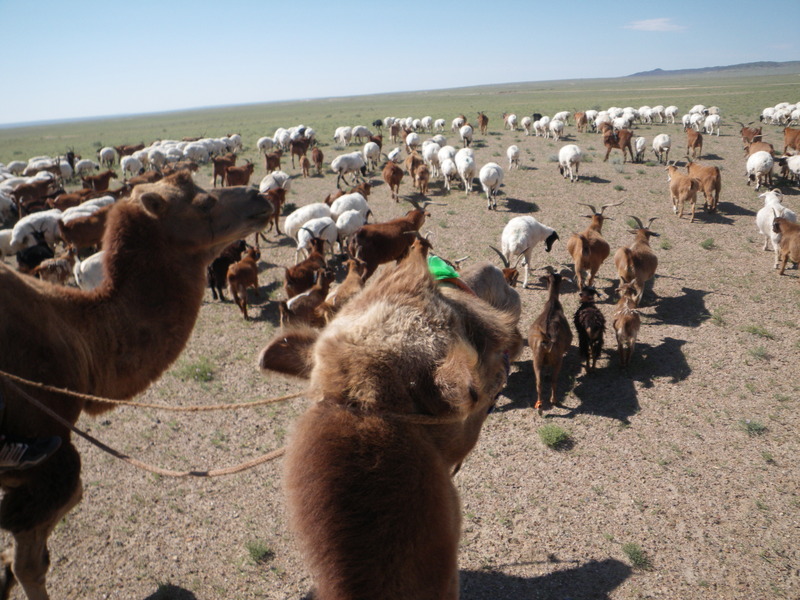
On the way back, or driver showed us how he herds sheep and goats using the camels. The basic technique is to walk the camel behind the herd, back and forth behind the herd pushing the sheep and goats forward. The sheep and goats keep out of the way of the camel, and the overall effect is to drive them wherever the shepherd wants them to go. Here is a 48MB video clip.
In our case, he took the sheep to this pond for their daily drink.
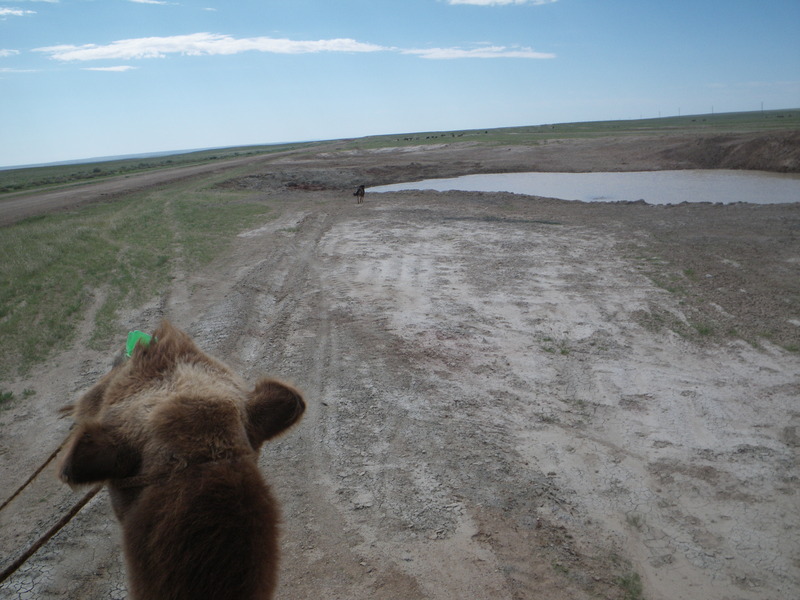


The camel feet are interesting. They are big enough that they don't leave deep footprints.
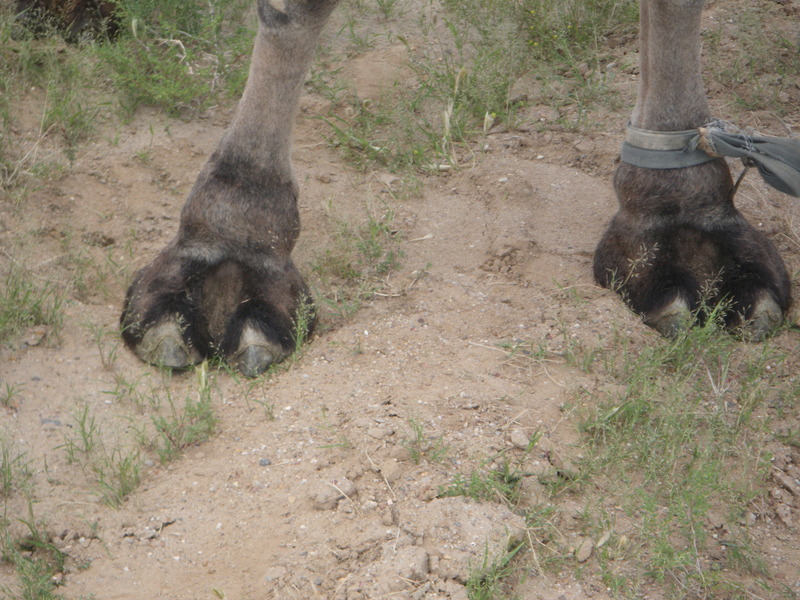
As well as horses and camels, sheep and goats, the only wildlife we have actually seen is a number of lizards.
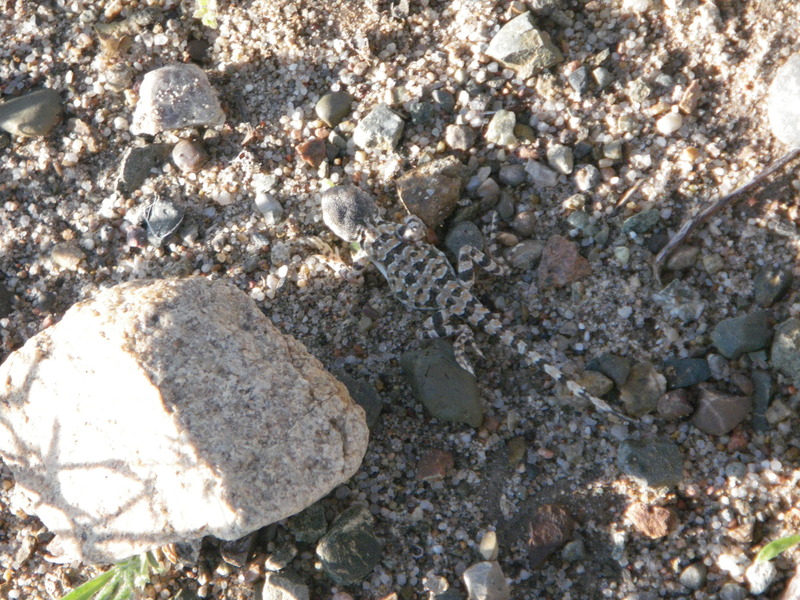

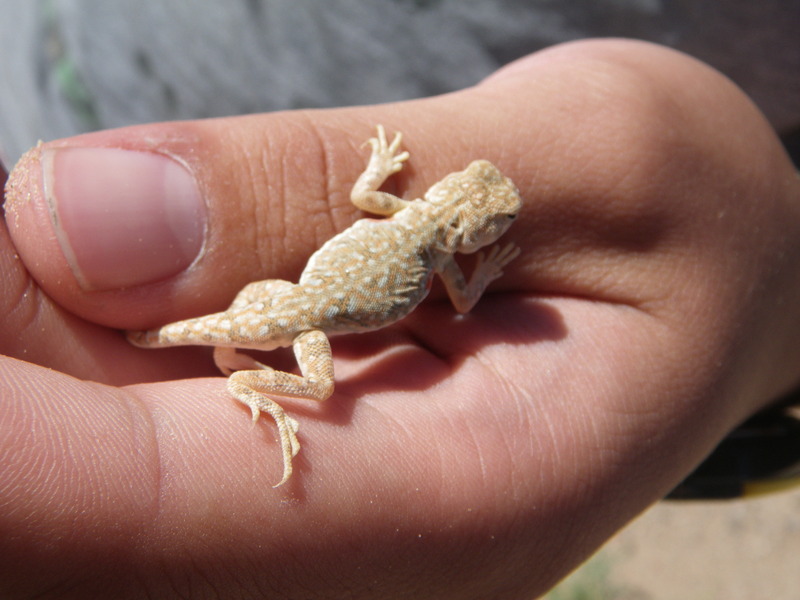
We have seen many tracks, some undoubtedly due to horses, camels, sheep and goats, and others perhaps to antelope or gazelles. We have seen holes that look like they were dug by rodents and neat little anthills.
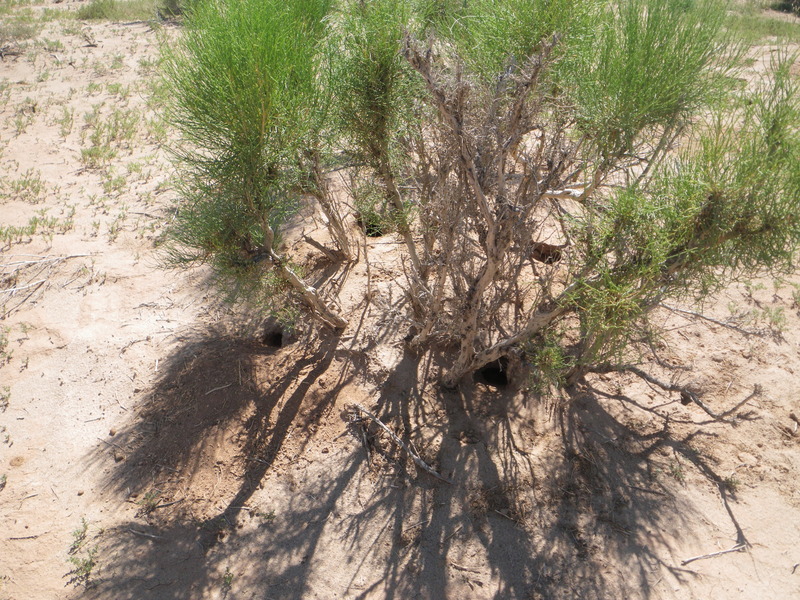
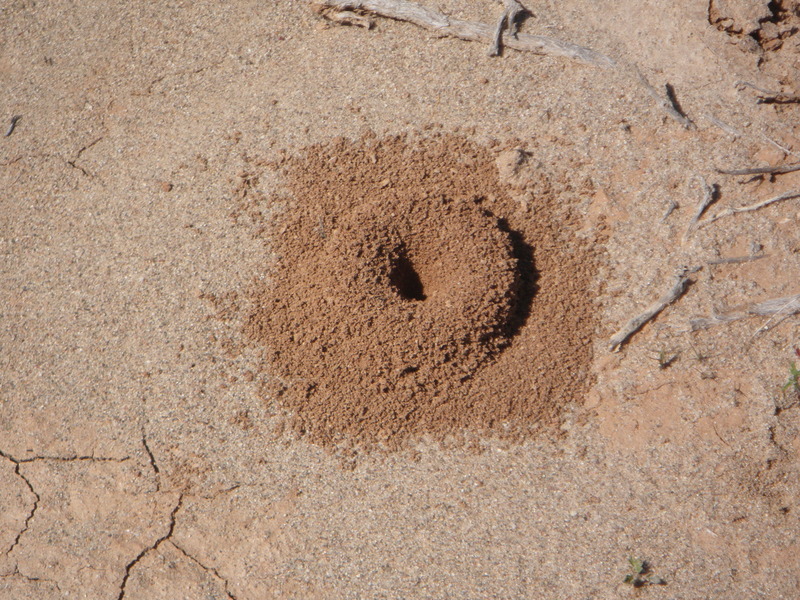
The guide told us about the Gobi bear, of which apparently only 29 survive. The number was 32 a few years ago. Because it is only classified as a subspecies of bear (Ursus arctos, though the museum of Natural History in Ulaan Baatar describes it as Ursus pruinosis), maybe it does not attract as much attention as endangered species, but it would be a shame to see it disappear. The one in the Natural History museum was considerably smaller than regular bears.
The only plant I actually recognized was a small wild garlic with pink flowers.

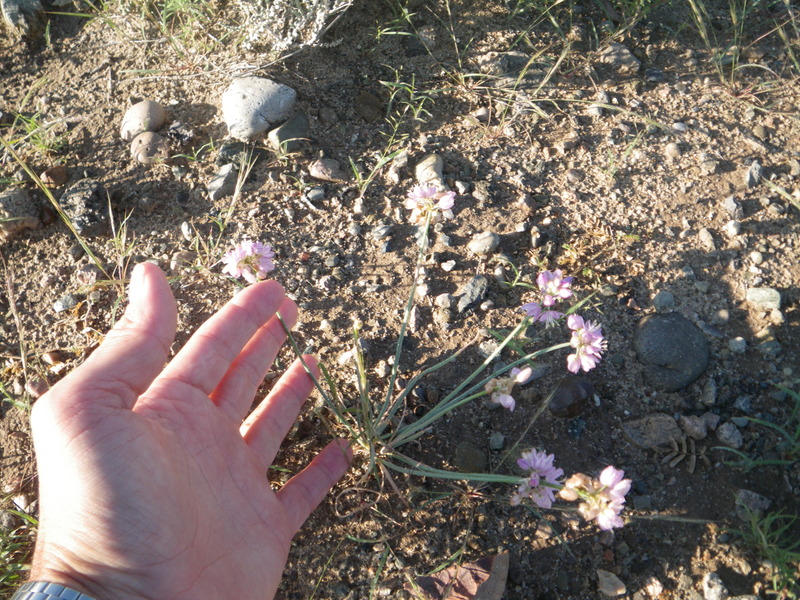
One of our camels really enjoyed eating it, and it may have contributed to the smelliness of what came out the other end.
This is a Gobi Bush, which may be saxaul, Haloxylon ammodendron.
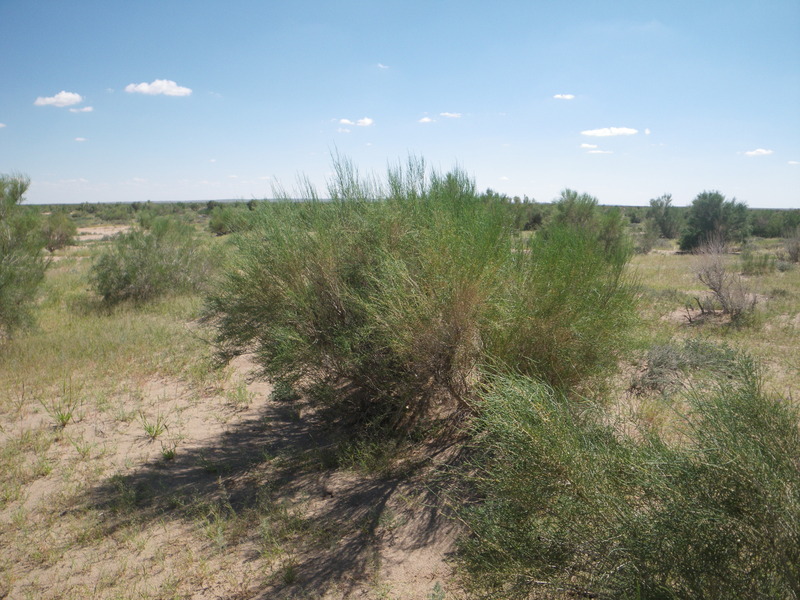
And this is a tall Gobi Bush.
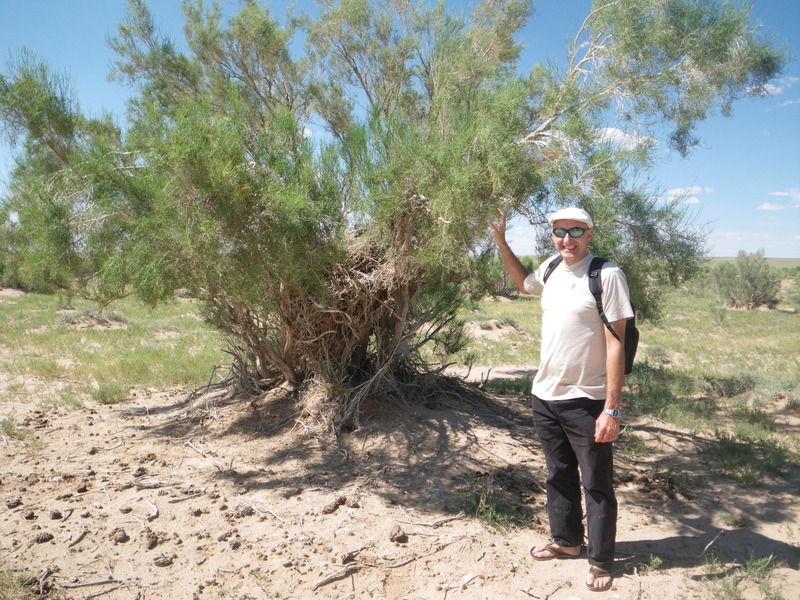
There were many other plants, including grasses and sedges, as one might expect in an open grassland or steppe.
